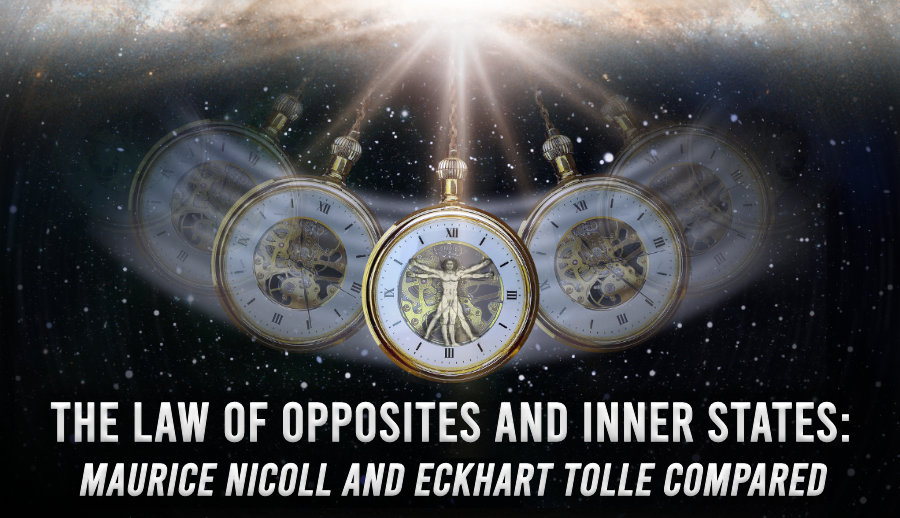
A duality of opposite forces, present throughout creation and in ourselves, has been depicted in western esotericism and eastern spirituality in various ways. The potential to unify or transcend opposites is a recurrent theme too. Modern spiritual authors Maurice Nicoll and Eckhart Tolle address this idea in strikingly similar ways, at times with near-identical expressions and examples. While both discuss the wider workings of the “law of opposites,” they mainly focus on psychology—on how our emotions cycle between opposite states, from pleasant to negative and back again. Both direct us to go beyond these opposites within us, and find a state of consciousness that has “no opposite.” While their outlooks can differ, their level of correspondence on this theme is truly remarkable.
That a duality of opposite forces underlie existence is an old idea; Maurice Nicoll mentions various examples from ancient sources in his Psychological Commentaries on the Teaching of Gurdjieff and Ouspensky.[1] But in Nicoll’s works within the Fourth Way tradition, and in the bestselling books of independent spiritual author Eckhart Tolle, it’s the psychological effects of the law of opposites that’s paramount. They suggest we’re trapped in ongoing cycles between opposite inner states, and propose using self-observation and present-moment awareness to go beyond this.
Yet they outline the all-pervasive nature of this law as well, sometimes with corresponding expressions and examples. Dual opposing forces, or polarities, they suggest, act throughout the universe at both a cosmic and individual level. There are movements towards expansion, growth or development, and a reverse movement of contraction, resistance or decline with all things. Everything is subject to cycles between these two major tendencies, in which one or the other is dominant. This can be seen in cycles of creation and destruction in the universe, birth and death in nature, the ascent and decline of civilizations, expansion and contraction of our hearts, and periods of advancement and loss in our own lives.
The authors call this principle “the law of opposites” at least once, but frequently use other terms.[2] [3] Nicoll mostly uses “The Law of the Pendulum” to describe “the work of the opposites” and the motions between them,[4] while Tolle uses various expressions such as “law of polarities”, “realm of opposites” and “play of opposites.”[5] But whatever term is used, both authors express the general idea that everything swings or cycles between opposite conditions in time.
As mentioned, they mostly focus on how this applies to our inner world of emotions, thoughts and moods. Our inner state moves back and forth between pleasurable, or apparently “positive” states, and unpleasant, painful or negative states to varying degrees, they say.
But unlike certain self-help teachings advocating “positive thinking” to counter negative or unhappy inner states, Nicoll and Tolle stress the importance of going beyond these cycles of opposites entirely. A movement to one side of this duality only perpetuates the eventual, and inevitable, counter movement to the opposite side. When it comes to opposites, “you cannot have one without the other” both write; opposite states are “inseparable”—two sides of the same coin or penny, to cite just one corresponding aphorism they share. Pleasant and unpleasant are therefore conjoined: you cannot permanently escape one by seeking the other.

Yet it is possible to free oneself from the mechanical succession of opposite states, they suggest, if we consciously observe and cease identifying with both sides of this cycle. That means both mental-emotional poles—so negative/painful states and their pleasurable counterparts too. Our real self is beyond these opposites, they say. By coming out of this inner cycle of opposites, we can instead come to experience a conscious state instilled with inner peace—and genuine love. Such a state has “no opposite” and comes from one’s real inner being, which is said to exist beyond ordinary mental-emotional opposites entirely.
Attaining to this state of consciousness, which is independent of anything external, is a major focus of their teachings, and they have much in common to say about it. But they don’t just describe the same general ideas: they use closely-matching phrases, expressions and examples too. As readers of my previous pieces will know, their correspondences are often descriptive not just conceptual—apparent in the terms and wording used. There are numerous cases of striking correspondences in their words. In this article, my comparative analysis will highlight their many similarities on the theme of opposites.
After comparing their commonalities, I will examine how they differ from the “positive thinking” approach when it comes to dealing with the opposites within, as well as from each other in a very significant way. For Nicoll also describes the importance of a “third force,” the reconciling aspect of the trinity—one of three fundamental forces whose workings Gurdjieff described under “the law of three”—in bringing opposites into harmony. There is no mention of such ideas in Tolle’s books.
Yet despite their sometimes different outlooks, their level of correspondence on this theme is significant and substantial. This article continues my research into similarities in their work—in which I’ve previously covered self-observation, self-identity and the “pain-body.”
Summary of similarities
We can summarise how Nicoll and Tolle describe the law of opposites functioning as follows:
- The law of opposites—also “law of the pendulum” (Nicoll) or “law of polarities” (Tolle)—describes a universal principle, governing everything in the manifest universe, including us.
- Shared examples of its influence include: the ascent and decline of civilisations, the expansion and contraction of our hearts, and the periods of advancement and loss in our own lives.
- This law also governs human psychology, as our ordinary thoughts, emotions and states swing or alternate between pleasurable or apparently “positive” states and unpleasant, painful or negative ones, to varying degrees.
- Our identification with any given state subjects us to its psychological opposite. The opposites are connected and “inseparable” such that “you cannot have one without the other,” both write. The opposite of any given state we experience will inevitably appear in time.
- As a corollary of this, the ordinary “positive” emotions we experience must inevitably “turn into” their opposite. Pseudo love, driven by self-interest, can easily turn into hate when one’s desires are frustrated for example.
- There are, however, superlative states, like genuine love, which are beyond the opposites. Their distinction is they cannot turn into a negative state as they have “no opposite.”
- These are experienced by disidentifying from the normal cycle of pleasurable and painful emotions—from both sides of the emotional spectrum—and coming to a conscious inner state in the present moment. This connects one with one’s real inner Being, which is beyond the opposites.
- This can only be reached within, when divested of the psychological cycle of opposites. It is entirely independent of anything external to oneself.
We’ll take a closer look at these similarities in the next section.
Note that while the authors more often use other, differing terms to describe the law of opposites, I mostly use this term since it’s the only designation both use, and because, for practical purposes, I require a common descriptor for the concept in question. The other language they use is employed more or less interchangeably to convey the same concept; this will become apparent in the examples contrasted below.
A universal law
Nicoll and Tolle make a number of shared points about how the law of opposites governs existence. I’ll examine these broader explanations first, before turning to their main focus—psychological states.
Everything in existence has an opposite
Nicoll and Tolle both point out that, due to the law of the pendulum or polarities, everything in the cosmos has an opposite it cannot exist without.
This law indicates that “to everything there is an opposite through which it exists and by which it is opposed,” Nicoll explains. This principle, he argues, has been recognised in different ways by various ancient sources.[6] “The law of polarities,” Tolle similarly tells us, “dictates that nothing can exist without its opposite, that there can be no good without bad.”[7]
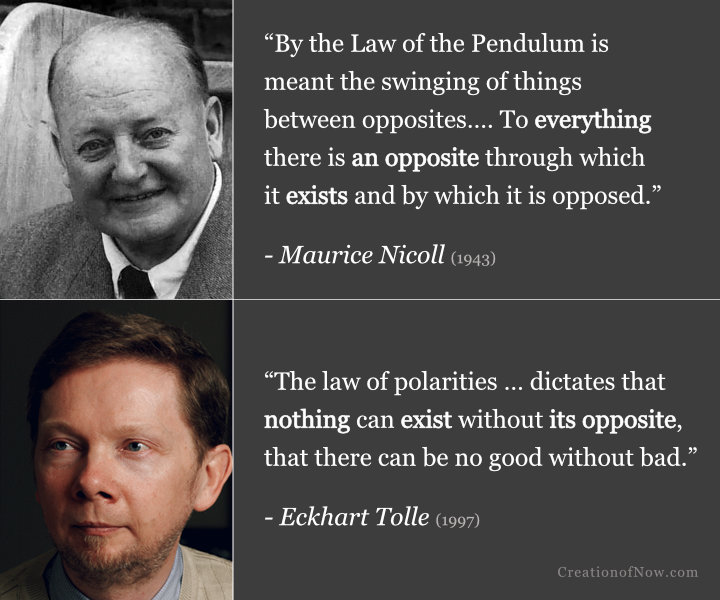
All things have an opposite they cannot exist without due to the law of the pendulum/polarities, Nicoll and Tolle explain.
This general maxim, we shall see, is applied to all facets of the law, whether in the personal and psychological sphere, or the world around us.[8]
Cycles between opposites
Everything swings or cycles between opposite conditions because of this law, the authors suggest.
In physics, the law of the pendulum—as first described by Galileo[9]— is concerned with physical motion, but Nicoll uses this term to describe the “swinging of things between opposites” which occurs in life in myriad ways. For Nicoll, a pendulum’s continual movement “from one side and then to the opposite side” demonstrates a wider cosmic principle whereby two opposite forces alternate in their periods of influence over any given phenomenon. “We can see the Law of the Pendulum at work in nature,” he tells us, “in the change of the seasons from winter to summer and back again, to and fro without ceasing, and in the movement of the tides, and in the motion of the waves, up and down, and so on.”[10]
“By means of the law of opposites” there are swings or cycles in time from one extreme to the other, at different levels and scales, under which “everything is kept balanced,” Nicoll writes. “The Law of the Pendulum indicates that there is a swing to and a swing fro in all things, but after a point in either direction there is a check and the opposite force begins to exert itself.” The greater the swing in one direction, the more pronounced the eventual counter swing will be to match it. “All phenomena, all visible things, all events, all earthly life, take place between opposite forces, or opposite poles, now swinging this way and now that, so that war follows peace and peace war, and famine follows plenty and plenty famine, and so on.” These “two forces, opposite in their nature … govern or limit all things and prevent too much excess or deficiency.”[11]
He points out that various ancient sources recognise this principle and even applied it to the universe itself:
[An ancient Mediterranean] school taught that the Universe comes together and breaks up in a vast time-cycle, or pendulum-swing. The pendulum-swing is only a cycle seen, as it were, sideways. This idea of things coming together in the cosmic creation and sundering into chaos is also found in ancient Eastern schools. For example, Brahma is said to breathe out and then breathe in the Universe.[12]
Tolle also explains the workings of the law of opposites, or polarities, in analogous ways. There is an inevitable “cyclical nature” in our dimension of the form, he tells us, in which everything moves between “creation and destruction, growth and dissolution” and “gain and loss.” This can be seen “reflected everywhere,” he writes. He also describes this principle as two universal movements: one of expansion or growth and a reverse movement of contraction and the “dissolution of form.” “Those two movements are reflected throughout the universe in many ways.”[13]
Like Nicoll, Tolle suggests a cycle between these two opposite movements applies not just to things in the universe, but likely to the universe itself—although he refers to science rather than ancient knowledge:
Some scientists also postulate that this movement from unity to multiplicity will eventually become reversed. The universe will then stop expanding and begin to contract again and finally return to the unmanifested, the inconceivable nothingness out of which it came – and perhaps repeat the cycles of birth, expansion, contraction, and death again and again.[14]
Birth and death, ascension and decline
The authors also claim this law applies to human lives—individually and collectively to the life of civilisations. Our lives, like all living creatures, occur between the opposites of “birth and death.”[15] The same can be said for nations, as both authors point out (and history shows). They have periods of ascendancy, flourish for a time, then eventually decline and either fall or are surpassed by another.[16] [17]
Expansion and contraction, success and failure
As one expression of this law, the authors describe two opposite movements, expansion and contraction, operating at various levels in life and affecting us personally.[18]
On a more personal and everyday level, this is said to cause the expansion and contraction of our hearts, they claim. It also influences the ups and downs we all go through in life: there are times of expansion or success, and periods when things fail or go wrong. Both also suggest, however, that negative cycles in our lives, or periods of contraction, can be used consciously for inner growth or preparation for the reception of something new. Instead of being upset at such times, we should understand the inevitability of this law and not expect that things should always be the same, and suffer or be disappointed when things change or are lost.[19] [20]
Here are side-by-side comparisons of them expressing these ideas:
Balance
A shared perspective both touch upon, is that the resisting or limiting force, which thwarts the growth or predominance of any given thing, is necessary for there to be an overall order or balance in life.
The limiting or opposing force in nature prevents “any one thing from getting the upper hand permanently,” Nicoll tells us. It is the interaction of two opposite forces—manifesting as the will to attain what any given thing wants, and the force of resistance opposing and limiting this—that prevents “too much excess or deficiency” and produces “a balance in all things.”[21]
Tolle also points out that “nothing can grow forever” as, if it did, “it would eventually become monstrous and destructive. Dissolution is needed for new growth to happen. One cannot exist without the other.”[22]
So, taking the big picture view, we can see that Nicoll and Tolle see this law functioning in much the same way—giving rise to opposite cycles of expansion and contraction governing and balancing everything in existence.
Summary table 1: general principles of the law of opposites
The table below provides a side-by-side comparison of the similar ways Nicoll and Tolle describe the law of opposites operating as a universal principle. Notice how their definitions closely match, and they include similar examples and points.
| Maurice Nicoll |
Eckhart Tolle |
| Refers to: ‘the law of opposites,’ ‘work of the opposites’ and, most often, ‘The Law of the Pendulum’ to describe a universal law. |
Refers to: ‘the law of opposites,’ ‘the law of polarities,’ ‘the realm of opposites,’ and ‘the play of opposites’ to describe a universal law. |
| ‘To everything there is an opposite through which it exists and by which it is opposed’ |
‘Nothing can exist without its opposite … there can be no good without bad.’ |
| This principle governs ‘all phenomena … all earthly life.’ ‘There is a swing to and a swing fro in all things.’ |
This principle is ‘reflected everywhere’ in ‘the physical dimension.’ The universe has a ‘cyclical nature.’ |
| ‘After a point in either direction there is a check and the opposite force begins to exert itself’ |
Everything cycles between ‘creation and destruction, growth and dissolution’ |
| ‘Two forces, opposite in their nature … govern or limit all things and prevent too much excess or deficiency.’ |
‘Two [opposite] movements are reflected throughout the universe.’ ‘There is … creation and destruction, growth and dissolution.’ |
| ‘[Opposite] forces … act in nature that keep everything between certain limits and so prevent any one thing from getting the upper hand permanently.’ |
‘Nothing can grow forever … Dissolution is needed for new growth to happen. One cannot exist without the other.’ |
| It was taught that: ‘the Universe [itself] comes together and breaks up in a vast time-cycle, or pendulum-swing.’ |
The universe itself may: ‘repeat … cycles of birth, expansion, contraction, and death again and again.’ |
| This principle governs the ‘swinging to and fro’ in history with its ‘continual encroachment of one nation on another.’ |
This principle is behind ‘the rise and fall of nations, political systems, civilizations.’ |
| ‘The period of our lives … swings between the opposite signs of birth and death.’ |
‘On the level of form, there is birth and death.’ |
| It causes ‘your own heart … to expand and contract.’ |
Causes ‘the incessant expansion and contraction of your heart.’ |
| ‘We have … moments of expansion and … moments of contraction… moments in which things go right and moments in which things go wrong.’ |
‘There are cycles of success, when things come to you and thrive, and cycles of failure, when they wither or disintegrate and you have to let them go.’ |
| ‘You cannot expect always to be just the same. Yet how many people are disappointed [when the pendulum swings back negatively].’ |
‘If you cling and resist at that point [during a down cycle], it means you are refusing to go with the flow of life, and you will suffer.’ |
In the next section, I will highlight their more specific and numerous correlations in the realm of human psychology.
The Opposites in human psychology
Now we come to the authors’ main concern: how the law of opposites governs our inner states. Nicoll and Tolle both claim our regular emotions are subject to this law, and so swing or cycle between opposites. They suggest our habitual identification with inner states is the main factor keeping this process going.
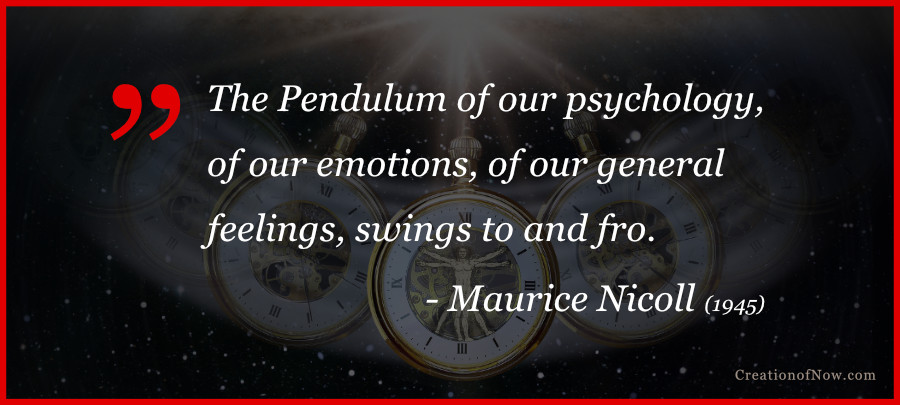
Opposite states are inseparable
Our regular inner states, that is, emotions and thoughts, are subject to the law of opposites the authors tell us. So, ordinarily, every thought or feeling we experience has an opposite, which will inevitably manifest “in time”—it’s just a matter of how long the cycle takes to alternate from one to the other. These swings occur because opposite states are “inseparable” or interdependent—two sides of the same coin or penny. We therefore “cannot have one without the other,” they insist. Any shift to one side of the emotional spectrum eventually brings about a counter movement toward the opposite emotional state.[23] [24]
The authors express these ideas in a similar fashion:
Pleasurable emotions turn into their opposites
Because opposite states are inseparable, what we might consider to be “positive emotions” can turn readily into their opposite, Nicoll and Tolle say—that is, into a strong negative or painful emotional state. We’ve already covered how they convey every typical state changes into its opposite in time; however, our so-called “positive” emotions—those we might consider pleasurable or pleasant—can also turn into their opposite very swiftly—“in a flash” or “at the flick of switch” they respectively point out.[25] [26]
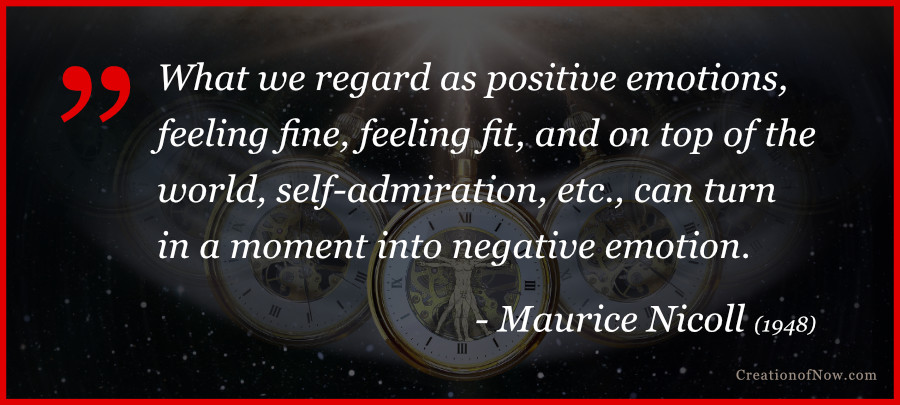
This is especially the case with the emotion mistakenly called “love”: this is often just a “possessiveness and addictive clinging that can turn into hate within a second,” Tolle writes.[27] Nicoll similarly suggests that pseudo love can “turn to dislike, suspicion, jealousy or hate in a moment.”[28]
Our so-called positive emotions can turn into their opposites so quickly because they are self-centred and dependent on external conditions that are bound to shift: “If there is plenty of flattery we feel very fine, but if there is not flattery we feel very depressed,” writes Nicoll.[29] “Praise and recognition make you feel alive and happy one day; being criticized or ignored make you dejected and unhappy the next,” Tolle also points out.[30]
And since ‘what we call a “positive” emotion is harnessed to negative emotion,’ Nicoll explains, the two inevitably go together, with the result that “love and hate are nearly indistinguishable” for many.[31] Tolle agrees that ‘many “love” relationships … actually oscillate between “love” and hate, attraction and attack.’[32]
The authors express these notions quite similarly at times. Here are six direct comparisons:
However, the authors both attest that more superlative states, such as real love, do exist beyond the cycle of opposites. We’ll come to that shortly.
Identification
A key factor keeping us bound to the cycles of opposites internally, which I’ve mentioned in passing a few times already, is identification, Nicoll and Tolle maintain.
I’ve discussed their views on this at great length elsewhere. Without repeating too much, identification, in the sense they use the term, means essentially placing—or really misplacing—one’s sense or feeling of “I” or “self” in anything not who we really are—especially transient thoughts, emotions and moods which arise compulsively or habitually. By identifying with an inner state, we become lost or absorbed in it, and it takes over our sense of who we are. At that point, it becomes something much more than a passing phenomenon in our psyche: it “becomes” us. Unless we can separate from the illusion that we are a given state, we fall unconsciously under its influence in that moment, and typically remain that way until it passes or we break our identification with it.
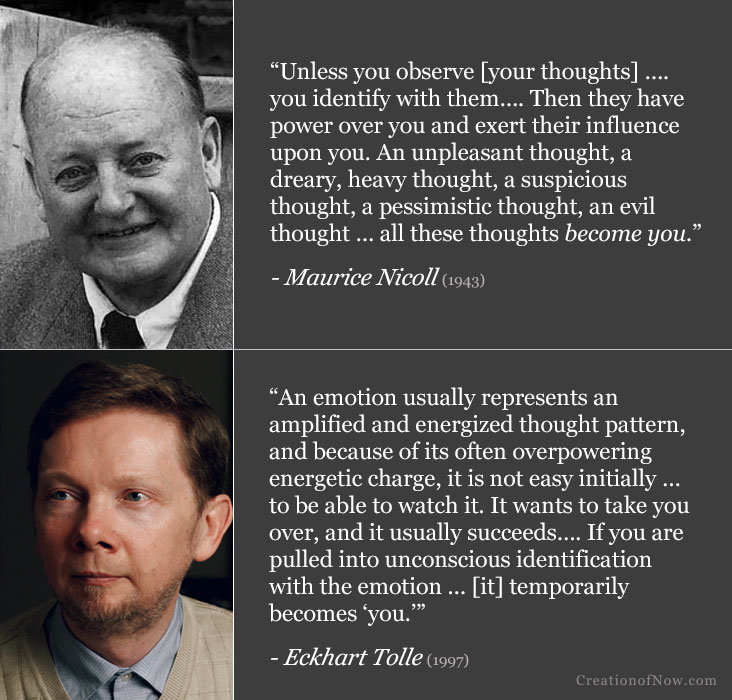
Transient thoughts or emotions become you when you identify with them, Nicoll and Tolle convey, and then have power over you.
Both heavily emphasise the need to consciously observe our habitual unconscious inner states and reactions in the present moment and non-identify or dis-identify from them—with a particular emphasis on negative states. This is one of the central tenets of their work.
Because our ordinary states occur under the law of opposites, identification is integral to keeping us psychologically bound to the cycle of opposite states within us, they suggest. Identifying with, and falling under the power of, one emotional state will unconsciously place us under the influence of its opposite as well. As we’ve seen, the opposites go together and there are cycles between them, so we reinforce a whole cycle between opposites if we identify with any given state. We are thus drawn further into “unconsciousness” by identifying with any given mental-emotional state on one polarity, or one side of the psychological pendulum, the authors maintain.[33] [34]
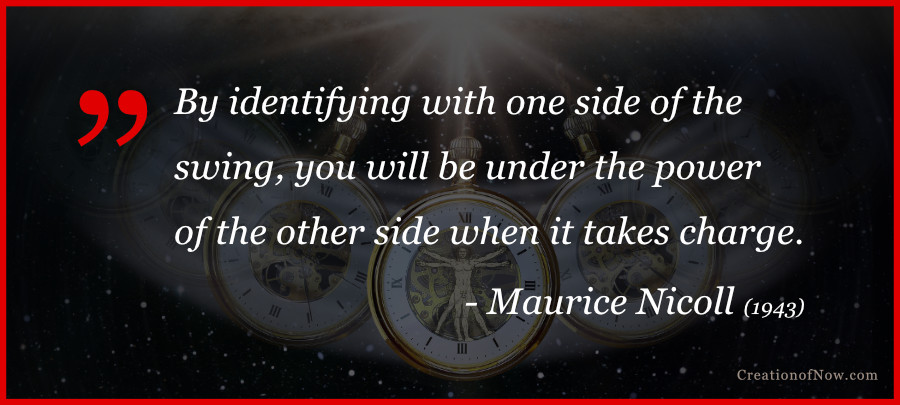
So to be free of any state in a lasting way, we must deal with its opposite too: it cannot be taken in isolation. We must stop identifying with both sides of the cycle, they suggest. If we stay in the “mind-identified condition” we’ll just remain trapped in “the continuously alternating pain/pleasure cycle,” writes Tolle.[35] A “swing in one direction is followed sooner or later by a swing in the opposite,” Nicoll explains, but if we could “not identify” then “the mechanical cycle might be gradually lessened.”[36]
Summary table 2: opposite psychological states
This table provides a side-by-side comparison of the similar ways Nicoll and Tolle describe the law of opposites operating psychologically, governing inner states. Their phrasing often closely corresponds: the same points and terms appear in similarly-structured sentences. Sometimes switchable expressions/idioms are used. For example: “faces of the same coin” versus “two sides of a penny,” “at the flick of a switch” versus “in a flash,” and “within a second” versus “in a moment” etc.
| Maurice Nicoll |
Eckhart Tolle |
| ‘You cannot have one emotion without its opposite…. The sphere of mechanical emotions … is under the law of the pendulum.’ |
‘Emotions … being part of the dualistic mind, are subject to the law of opposites…. You cannot have good [emotions] without bad.’ |
| ‘Now every thought or feeling that comes into your consciousness has an opposite.’ |
‘Emotions exist within the realm of opposites.’ |
| ‘The two opposites [of the emotional pendulum] are connected like the two sides of a penny…. It is important to see this.’ |
‘Seen from a higher perspective, both the negative and the positive [emotional] polarities are faces of the same coin.’ |
| ‘[Opposite states] form one thing … and they are inseparable … that is, you cannot have one without the other.’ |
‘The [emotional] polarities are mutually interdependent. You cannot have one without the other.’ |
| ‘Everything comes to an end and turns into its opposite in time…. The end of sorrow is joy, the end of weeping is laughter.’ |
‘And every pleasure or emotional high contains within itself the seed of pain: its inseparable opposite, which will manifest in time.’ |
| ‘What we might call our positive emotions … turn very easily into their opposites—namely, into negative emotions.’ |
‘Positive emotions generated by the ego already contain within themselves their opposite into which they can quickly turn.’ |
| ‘What we [wrongly] call love can turn to dislike, suspicion, jealousy or hate in a moment.’* |
‘What the ego calls love is possessiveness and addictive clinging that can turn into hate within a second.’ |
| ‘We only know emotions that turn readily into their opposites, and do so often in a flash. We call it love but it is not love.’* |
‘And what is often referred to as love … is [really] an addictive clinging … that can turn into its opposite at the flick of a switch.’ |
| ‘The pleasant emotions that we ordinarily experience [can] turn into the most unpleasant emotions in a flash.’ |
‘[So-called] love can … turn into savage attack, feelings of hostility, or complete withdrawal of affection at the flick of a switch.’ |
| ‘If there is plenty of flattery we feel very fine, but if there is not flattery we feel very depressed.’ |
‘Praise and recognition make you feel alive and happy one day; being criticized or ignored make you dejected and unhappy the next.’ |
| ‘What we call a “positive” emotion is harnessed to negative emotion so that in mechanical life love and hate are nearly indistinguishable.’ |
‘Many “love” relationships, after the initial euphoria has passed, actually oscillate between “love” and hate, attraction and attack.’ |
| ‘A swing in one [emotional] direction is followed … by a swing in the opposite direction…. One is over-excited and then too depressed…. If you could … not identify … the mechanical cycle might be gradually lessened.’ |
‘In the unenlightened, mind-identified condition, what is sometimes wrongly called joy is the usually short-lived pleasure side of the continuously alternating pain/pleasure [emotional] cycle.’ |
| ‘When you identify with the thought or the feeling you … are on the pendulum, and insensibly … will find yourself having the opposite thought or opposite feeling…. This is just where our unconsciousness lies.’ |
‘The polar opposites will become strengthened and more deeply entrenched…. [if] you … become identified with one of the polarities, [as] you will [then] … be drawn [further] into unconsciousness yourself.’ |
*Note: Nicoll is paraphrasing Ouspensky here.
In the next section, I examine how they describe the existence of states beyond the usual psychological opposites.
Beyond the opposites: higher or deeper emotions and states
Despite our ordinary emotions being governed by the law of opposites, there are states beyond opposites—although we usually only experience them “occasionally” “in flashes,” according to Nicoll,[37] or as “brief glimpses” according to Tolle.[38]
In Fourth Way terminology, these states are called “positive emotions” and come from what’s called the higher emotional centre—one of two higher centres in us attuned to higher vibrations.[39] The lower psyche must be cleansed and connected with higher centres through conscious inner work, in order to receive their influences.[40]
You will taste [a real] positive emotion for a brief moment—something blessed—that is, filled with such bliss that nothing of human love-hate emotions can be compared with it. What we regard as positive emotions, feeling fine, feeling fit, and on top of the world, self-admiration, etc., can turn in a moment into negative emotion. Such emotions, such pleasant emotions, are not positive emotions; these never change into their opposites but visit us and then withdraw.[41]
I personally find the term positive emotions confusing here, as “positive” invokes its binary opposite in language, which is “negative”—which may lead one to think that these positive emotions are the counterpoint to negative states on the psychological pendulum. But that is not what is meant at all. While ordinary states typically swing between opposites, negative emotions are said to be one of the chief factors preventing us from even feeling states from Higher Emotional Centre at all (pride being another).[42] The, “real positive emotions,” Nicoll refers to, are not be confused with the ordinary pleasurable emotions that we wrongly “regard as positive emotions,” as they will turn into their opposites—that is, negative emotions. Instead, Nicoll is referring to something beyond this pendulum cycle entirely. The distinguishing feature of a real positive emotion, he explains, is that it “has no opposite.” It “may come in a flash and disappear, but… cannot turn into any opposite thing, into a negative state.” It is something “utterly different from the ordinary heavy emotions” we experience, whether pleasant or unpleasant.[43]
Tolle likewise affirms that we need “to differentiate between positive emotions that are ego-generated and deeper emotions.” The deeper states of being “can be obscured, but … have no opposite.” As such they do not “turn into hate” or any form of emotional pain like ordinary emotions often do.[44]
This is again the key difference between the pseudo love, discussed earlier, which turns easily into its opposite, and real love, which both describe as bringing a sense of unity—of being “as one” or having “oneness.” “Our ordinary so-called love turns very easily into hate,” writes Nicoll, but genuine love, as a real positive emotion, “has no opposite and attracts no contrary to it, having everything in itself as one.”[45] Tolle also writes of “the love that comes with the realization of your oneness with all that is” and “has no opposite.” Such “real love,” cannot “suddenly turn into hate.”[46]
Here are some side-by-side examples of them expressing these ideas:
Real “I” or Being
While flashes or glimpses of higher or deeper states without opposite can occur spontaneously, we invite a more sustained experience of these, Nicoll and Tolle suggest, if we consciously come out of the mental-emotional cycle of opposites within us and connect with our real self or being.
Our real I, self or being contains no opposites, they tell us, and cannot be found in the usual cycle of opposite states; it exists beyond them. In contrast, our false self—the false personality or ego—exists within the swings of psychological opposites. To connect with our real self, we must consciously observe our psychology in the present moment and cease identifying with what we are not—including all the habitual inner states under the law of opposites. By doing this we make room for what’s real to come forth. While I’ve compared the authors on these matters before, I do so now with reference to gaining inner freedom from the cycle of opposite mental-emotional states.
“Our moods are all hung on to pendulums,” Nicoll writes. “Unfortunately we identify with them. We forget that “Real I” is [found] in the centre of the pendulum-swing.” “We must find some way of reconciling these opposites and not being on this Pendulum swing at every moment” because “no harmony can be produced” this way, he tells us. Even “your own views of yourselves are on these opposites and are specially governed by False Personality.” Yet if we cease to “feel” ourselves “through the opposites,” then our “feeling of ‘I’ moves to the centre…. the place or state where Real ‘I’ is,” he explains. “We cannot reach it from one or the other opposite.” As this occurs, “harmony, balance, begins to replace the tensions of the opposites that existed before.” A person becomes “closer and closer to his real self, his Real I, which is in the centre of his being and contains no opposites.”[47]
“Ego-generated emotions are derived from the mind’s identification with external factors” and “exist within the realm of opposites” Tolle also affirms. “States of Being,” however, “have no opposite.” If you disidentify with the usual unconscious emotional polarities, “a deeper dimension underneath the play of opposites reveals itself to you” that’s “beyond good or bad” when in that “state of inner connectedness with being.” This is “the good that has no opposite, the joy of Being.”[48]
Inner peace from being
Nicoll and Tolle both point out that the happiness and peace we can find when connected with our real inner being is not dependent on anything external.

Happiness from external attainment isn’t deep, but peace from one’s inner being is independent of that, and remains whatever happens—if we stay awake or present within, Nicoll and Tolle suggest.
“The quality of happiness that comes from being first, or having most, or looking best, and so on, is not a genuine or deep happiness since it depends uneasily on what people think and needs continual re-stimulation,” Nicoll writes. In contrast, the peace and happiness that “belongs to one’s inner being” is “independent of external things” and “cannot be shaken by external events if you keep awake.”[49]
“The happiness that is derived from some secondary source is never very deep,” Tolle also makes clear, whereas “the joy of Being … depends on nothing outside itself” and “frees you from dependency on form.” The “deep inner core of peace,” that’s felt “in the state of inner connectedness with Being,” still remains “even if everything were to collapse and crumble all around you”—provided, of course, that you “stay present” and maintain “connectedness with Being.”[50]
Summary table 3: beyond opposite states
This table provides a side-by-side comparison of the similar ways Nicoll and Tolle describe the possibility of experiencing superlative states that have “no opposite,” and are derived from one’s real being. Notice how shared points and examples often appear; sometimes with very similar phrasing.
| Maurice Nicoll |
Eckhart Tolle |
| ‘We may have … flashes of positive emotion … utterly different from the ordinary heavy emotions.’ |
‘We need to differentiate between positive emotions that are ego-generated and deeper emotions.’ |
| ‘Real positive emotions … may come in a flash and then disappear, but they cannot turn into any opposite.’ |
‘[These deeper] states of Being can be obscured, but they have no opposite.’ |
| ‘A [real] positive emotion … never turns into an opposite. Our ordinary so-called love turns very easily into hate. A [real] positive emotion has no opposite.’ |
‘Love, joy, and peace are deep states of Being …. As such, they have no opposite…. Real love doesn’t … suddenly turn into hate, nor does real joy turn into pain….’ |
| ‘Occasionally we do have real [positive] emotions for a very short time.’ |
‘You may get glimpses of true joy, true love, or of a deep inner peace.’ |
| ‘But love … as a [real] positive emotion has no opposite and attracts no contrary to it, having everything in itself as one.’ |
‘The love that you feel deep within, the love that comes with the realization of your oneness with all that is. This is the love that has no opposite.’ |
| ‘Our moods are all hung on to pendulums…. Unfortunately we identify with them. We forget that “Real I” is in the centre of the pendulum-swing, and … swing between excitement and dejection … enthusiasm and depression.’ |
‘Ego-generated emotions are derived from the mind’s identification with external factors which are … unstable and liable to change at any moment…. Emotions exist within the realm of opposites. States of Being … have no opposite.’ |
| ‘If you … do not feel yourself through the opposites …the feeling of ‘I’ moves to the centre…. the place or state where Real ‘I’ is. Real ‘I’ or Master comes from “above”…. We cannot reach it from one or the other opposite.’ |
‘A deeper dimension underneath the play of opposites reveals itself to you as an abiding presence, an unchanging deep stillness, an uncaused joy beyond good and bad. This is the joy of Being, the peace of God.’ |
| ‘Harmony, balance, begins to replace the tensions of the opposites that existed before…. This brings [a man] closer and closer to his real self, his Real I, which is in the centre of his being and contains no opposites.’ |
‘True salvation is fulfillment, peace, life in all its fullness. It is to be who you are, to feel within you the good that has no opposite, the joy of Being that depends on nothing outside itself.’ |
| ‘The quality of happiness that comes from being first, or having most … is not … genuine or deep.’ |
‘The happiness that is derived from some secondary source is never very deep.’ |
| ‘There is another quality of happiness … independent of external things. It belongs to one’s inner being…. The False Personality … cannot know it…. [It] replace[s] restlessness and its kindred anxiety and fear by peace. This peace cannot be shaken by external events.’ |
‘Being takes you beyond the polar opposites of the mind and frees you from dependency on form. Even if everything were to collapse and crumble all around you, you would still feel a deep inner core of peace. You may not be happy, but you will be at peace.’ |
| You must ‘keep awake’ to maintain this state |
You must ‘stay present’ to maintain this state |
The Kybalion: A different approach to the opposites
As mentioned, the general idea behind the law of opposites—of an inherent duality in the cosmos and in us—has an ancient heritage. Yet the similar ways Nicoll and Tolle describe how this principle operates in our psychological states goes beyond, I believe, just a shared restatement of this broad view in its most ancient, symbolic or philosophically abstract sense. As we have seen, they describe in quite specific, modern terms—sometimes using language drawn from science and psychology— how this law governs our inner states. They also employ the same or equivalent expressions or examples on a number of occasions.
“The Kybalion contends there are constant movements or cycles between opposite polarities in the cosmos and in ourselves.”
However, their descriptions also bear a notable similarity to an earlier early 20th century text: The Kybalion: A Study of the Hermetic Philosophy of Ancient Egypt and Greece.[51] The Kybalion was a highly influential esoteric book of the early 20th century which had a significant impact on modern occultism and New Age thinking. Since both Nicoll and Tolle have a clear similarity to what this text outlines on the theme of the law of opposites, it is worth comparing their views, and assessing where they agree and disagree.
As we’ll see, Nicoll and Tolle’s general outline of how the law of opposites functions is very much in line with this book’s definitions and descriptions, yet the psychological method they suggest we apply to ourselves is actually very different from what The Kybalion advocates. While The Kybalion agrees that our inner states swing ceaselessly between opposites, it advocates polarising oneself on the positive pole of this inner cycle to avoid the negative, with a method akin to positive thinking. In contrast, Nicoll and Tolle advocate disidentifying from both opposites and coming out of these psychological cycles entirely.
Published in Chicago in 1908, The Kybalion purports to convey secret teachings passed down from Hermes Trismegistus, and is mysteriously attributed to “Three Initiates.” While it is generally acknowledged that it does convey hermetic ideas, it also advances many notions consistent with the 19th century New Thought movement. [52] It is generally accepted that the real author was William Walker Atkinson, a prolific New Thought writer who published under various guises.[53]

The Kybalion outlines seven key principles which it claims “the entire Hermetic Philosophy is based” upon.[54] Principles four and five, the “principle of polarity” and the “principle of rhythm” respectively, describe how opposite forces act in the cosmos, and in our psychology, much as Nicoll and Tolle also explain.
The Kybalion’s “principle of polarity” maintains that “in everything there are two poles, or opposite aspects,” and that “‘opposites'” are really only the two extremes of the same thing, with many varying degrees between them.”[55] This is familiar territory—we’ve seen Nicoll and Tolle describe opposites as inseparable: as two sides of the same coin or penny.
The book’s next closely-related principle, rhythm, contends there are constant movements or cycles between these opposite polarities in the cosmos and in ourselves:
“In everything there is manifested a measured motion, to and fro; a flow and inflow; a swing backward and forward; a pendulum-like movement; a tide-like ebb and flow; a high-tide and low-tide; between the two poles which exist in accordance with the Principle of Polarity…. There is always an action and a reaction; an advance and a retreat; a rising and a sinking. This is in the affairs of the Universe, suns, worlds, men, animals, mind, energy, and matter. This law is manifest in the creation and destruction of worlds; in the rise and fall of nations; in the life of all things; and finally in the mental states of Man.”[56]
“There is always the Rhythmic swing from one pole to the other. The Universal Pendulum is ever in motion. The Tides of Life flow in and out, according to Law.”[57]
Nicoll and Tolle are clearly in agreeance with these definitions, describing both the inseparability of opposites and alternating swings or cycles between them. They also give many of the same “big picture” examples found in the Kybalion—such as the rise and fall of nations and expansion and contraction of the universe itself. Nicoll employs the same analogy of the pendulum, while Tolle uses the same language of “polarities.” The Kybalion was probably the first esoteric text to use this modern scientific language to describe the esoteric concept of opposites in a clear, concise and accessible fashion—or, at the very least, helped to popularise this approach.
Most importantly, The Kybalion also agrees that these principles apply to “the mental states of Man” which come in pairs of opposites, such that “Love … may and often does turn into Hate and likewise Hate may be transformed into Love, by changing its polarity.”[58] This principle, governing swings between opposite states within us, “accounts for the bewildering succession of moods, feelings and other annoying and perplexing changes that we notice in ourselves” as we are carried “from one extreme of feeling to the other.”[59] Here again, we find commonality. As I’ve demonstrated at length, both Nicoll and Tolle discuss how our apparent “love” easily turns into hate.
Yet while Nicoll and Tolle broadly agree with this book on how the principle of opposites operates within and without, the psychological method they propose we actually practice is in fact very different. The Kybalion has other ideas when it comes to how we should deal with these cycles of opposite inner states in us. Yet the similar language across these sources can mask the differences in their methodologies, which, on closer examination, are actually more than “poles apart.” For, unlike The Kybalion, Nicoll and Tolle want to take us beyond all poles altogether.
Positive thinking vs self-observation
As we’ve seen, Nicoll and Tolle direct us to go beyond our cycles of opposite inner states by ceasing to identify with both sides of the pendulum swing, or both emotional polarities. Yet the Kybalion proposes a different method whereby a “person polarizes toward the Positive end of the scale instead [of] toward the Negative.” This method is generally described as the application of “the Law of Neutralisation.” Instead of withdrawing—dis-identifying—from both opposites, as Nicoll and Tolle propose, the Kybalion suggests we consciously separate from the negative emotional swing only. The practitioner “polarizes himself” in the positive side of the cycle and thereby “neutralizes the Rhythmic swing of the pendulum which would tend to carry him to the other pole.”[60]
The Kybalion describes the application of the Law of Neutralization as follows:
Its operations consist in the raising of the Ego above the vibrations of the Unconscious Plane of mental activity, so that the negative-swing of the pendulum is not manifested in consciousness, and therefore they are not affected. It is akin to rising above a thing and letting it pass beneath you. The Hermetic Master, or advanced student, polarizes himself at the desired pole, and by a process akin to “refusing” to participate in the backward swing or, if you prefer, a “denial” of its influence over him, he stands firm in his polarized position, and allows the mental pendulum to swing back along the unconscious plane [without it affecting him on the higher conscious plane].[61]
In this way, one can “escape the swing toward Pain, by the process of Neutralization” the text later adds. “By rising on to the higher plane of the Ego, much of the experience that comes to those dwelling on the lower plane is avoided and escaped.”[62]
So neutralisation, in the sense meant in The Kybalion, is to remain polarised on the positive psychological pole of opposites and thereby avoid the reverse swing into a negative state. (The reverse swing towards pain still occurs, but beneath one’s consciousness).
However, when one is already in a negative state the proposed method is to reverse the polarity by concentrating “upon the Positive pole of that same [negative] quality.” So in the case of feeling fear, one is told to concentrate on courage “until finally you … become polarized on the Positive pole instead of the Negative.”[63]
We have shown you that a mental state and its opposite were merely the two poles of one thing, and that by Mental Transmutation the polarity might be reversed…. If you are possessed of Fear, do not waste time trying to “kill out” Fear, but instead cultivate the quality of Courage, and the Fear will disappear…. Some writers have expressed this idea most forcibly by using the illustration of the dark room. You do not have to shovel out or sweep out the Darkness, but by merely opening the shutters and letting in the Light the Darkness has disappeared. To kill out a Negative quality, concentrate upon the Positive Pole of that same quality, and the vibrations will gradually change from Negative to Positive, until finally you will become polarized on the Positive pole instead of the Negative.[64]
A reverse application of this method—to polarise negatively—is also said to be possible, but discouraged. One can lower their vibrations to go toward the negative mental-emotional pole, or raise them toward the positive pole. But in either case, one can only escape one state by polarising into its opposite, according to The Kybalion. Quite understandably, the book suggests we polarise ourselves on the positive pole.
“While not explicitly teaching … ‘manifestation’ per se, The Kybalion advocates philosophical positions which underlie this popular belief.”
This method, involving concentrating mentally on the positive, is encapsulated in one of the book’s axioms: “True Hermetic Transmutation is a Mental Art.”[65] It is also, evidently, very much in line with the New Thought movement to which the Kybalion is connected—which, in turn, has heavily influenced various popular iterations of “positive thinking” teachings in contemporary self-help spirituality. These are usually based around the “law of attraction” and the idea of using thoughts to “manifest” what wants.
While not explicitly teaching what today is often called “manifestation” per se, The Kybalion advocates philosophical positions which underlie this popular belief. This includes ideas about the primacy of mental energy in the universe, the possibility of using “mental transmutation” to change conditions in the universe, and the benefits of positive thinking (although that term is not used, the practice is essentially described). I’m not suggesting positive thinking is all it teaches, but that is the primary method it offers for dealing with negative inner states on the pendulum of mental-emotional opposites. It is an approach that takes place within the emotional polarity of opposites—it is not designed to take one beyond it.
Suffice to say, this is very different to what Nicoll and Tolle advocate. The main method they teach, as I’ve previously shown at length, is self-observation. The present-moment observation of a state is not the same as thinking about it, both point out, and there must be no analysis, criticism, or judgement of what is observed. Both invoke the terms “silent witness” and “awareness” to describe this direct act of perception, which does not involve thinking at all, whether it be “positive” or “negative.”
“Nicoll and Tolle see a movement to one side of the emotional spectrum as merely precipitating an inevitable swing back to the other pole.”
Self-observation is said to shine “the light of consciousness” on inner states, an act of perception that breaks identification with an inner state. This means one’s sense/feeling of self or “I” shifts from being “in” the transient state to being the observer looking at it. It’s this conscious inner shift which is said to withdraw force from the thought or emotion, weaken it, and enable consciousness (which itself has no psychological content) to grow stronger or increase. (I have examined their views on overcoming identification at length in a previous article).
As we’ve also seen, Nicoll and Tolle see a movement to one side of the emotional spectrum as merely precipitating an inevitable swing back to the other pole. According to them, we cannot seek to escape negative states by dwelling on their positive opposites because they are two sides of the same phenomenon. To seek refuge in a positive or pleasant state only reinforces its opposite aspect: an approach both see as futile. Instead, we are told to dis-identify from both opposites to go beyond them; this allows us to reach a state that has “no opposite.”
For example, when discussing the emotional swings from so-called love to hate that often happen in romantic relationships, Tolle tells us you cannot “only eliminate the negative or destructive cycles” as the positive and negative are aspects of the same thing:
The polarities are mutually interdependent. You cannot have one without the other. The positive already contains within itself the as yet unmanifested negative. Both are in fact different aspects of the same dysfunction.
Nicoll also tells us it is not possible to withdraw force from one side of the emotional pendulum alone—we have to “draw force” from both. “A swing in one direction is followed sooner or later by a swing in the opposite direction,” he writes. “It is useless to observe only one of these two states. It will not stop them.” “It is only Observing I that does not swing with the pendulum; and that has to be strengthened,” he explains. “We have to observe the whole swing from one extreme to the other in order to discover our particular opposites.” By becoming conscious of both sides, seeing “how they are connected” we can stop identifying with both sides of the pendulum swing and “draw force from both the opposites.” Otherwise we’re likely to remain psychologically trapped in “the usual action-reaction work of the opposites.”[66]
“Now … it is necessary to draw force from both the opposites—that is, from both ends of the pendulum. You will find by practice that it is not enough, or indeed possible, to draw force from one opposite. The two opposites are connected like the two sides of a penny and when in one you must remember the other. If you let yourself identify mechanically with each of the two opposites in turn—that is, with one side and then the other side of the emotional pendulum, wholly believing each with your whole feeling of ‘I’—you will remain helplessly on the pendulum, swinging to and fro from excitement to depression, from depression to excitement. Emotionally you will be mechanical. You will not be living consciously in relation to your Emotional Centre but living mechanically and becoming every mood it presents. It is important to see this. People remain blind to it. They simply are their states and cannot separate. But if you are learning to draw force both from the excited side and the depressed side by remembering yourself in each and remembering its opposite and to some extent practise this in daily and in weekly life, you are beginning to live a little consciously.”[67]
As we’ve seen, Nicoll and Tolle suggest this approach can take us beyond the cycle of opposites entirely, into states of unity which have “no opposite.” The genuine love found beyond opposites cannot turn into hate—unlike the apparently “positive” emotion commonly mistaken for it.
To sum up, Nicoll’s and Tolle’s approach of eschewing both opposites entirely, is quite different to The Kybalion’s, which advocates seeking to “polarise” oneself on the positive side of the spectrum of opposites while avoiding the swing into the negative side.
The real self: “positive” or beyond polarities?
This discrepancy between The Kybalion’s perspective and that advocated by Nicoll and Tolle also extends to the very notion of who we are.
In a previous article, I showed how Nicoll and Tolle both hold to the view that we have a real self, a false self, and a transient worldly personality.[68] Only our real self, as we’ve seen, is held to be beyond the law of opposites. While our false self or personality exists and functions within the cycle of opposite states, our real self lies beyond this; it cannot be found in either pole of ordinary psychological states. Nor is it merely an absence of strong feelings either way on this spectrum—it is something else entirely. One is said to come to or connect with their real self by ceasing to identify with both poles of psychological states, whether pleasurable or negative.
In contrast, however, The Kybalion seems to suggest that one’s “Higher Self” or “Being” is found by “polariz[ing] … at the Positive Pole” of the “mental pendulum,” whereas the lower personality is said to be found at the negative pole:
The Hermetists also teach that the Law of Neutralization enables one, to a great extent, to overcome the operation of Rhythm in consciousness. As we have explained, there is a Higher Plane of Consciousness, as well as the ordinary Lower Plane, and the Master by rising mentally to the Higher Plane causes the swing of the mental pendulum to manifest on the Lower Plane, and he, dwelling on his Higher Plane, escapes the consciousness of the swing backward. This is effected by polarizing on the Higher Self, and thus raising the mental vibrations of the Ego above those of the ordinary plane of consciousness. It is akin to rising above a thing and allowing it to pass beneath you. The advanced Hermetist polarizes himself at the Positive Pole of his Being-the “I Am” pole rather than the pole of personality and by “refusing” and “denying” the operation of Rhythm, raises himself above its plane of consciousness, and standing firm in his Statement of Being he allows the pendulum to swing back on the Lower Plane without changing his Polarity.[69]
This is quite different to what Nicoll and Tolle insist: that our real self or being is beyond all opposites, and our false self is situated within both opposites—including the apparently “positive” psychological states occurring within these cycles of opposites.
Nicoll’s and Tolle’s stance is consistent with their position that the two opposites are interconnected, and you cannot have one without the other. The psychological cycle between opposites is treated as one total phenomenon to deal with as a whole in order to go beyond it—which requires one to withdraw, psychologically, from both sides of it.
It is curious that The Kybalion actually points out that the opposites are “only the two extremes of the same thing”[70] yet, when it comes to negative states, proposes a method of seeking to keep one side of this “same thing” while rejecting the other.
The law of three: reconciling opposites by a third force
There is a significant difference between Nicoll and Tolle on this idea of going beyond mental-emotional opposites.
“The Law of Three … holds that there are three universal forces present in every manifestation in creation.”
Nicoll’s discussion of the law of opposites is situated within the broader Fourth Way teaching of what is called “The Law of Three,” an idea connected with religious conceptions of the trinity. This law holds that there are three universal forces present in every manifestation in creation.[71] As far as I can tell, this teaching is not found in Tolle’s books (or in The Kybalion for that matter). Yet this principle profoundly shapes how Nicoll approaches this subject; so, on this point, there is a great divergence between him and Tolle.
Essentially, Nicoll explains that the swings between two opposites in our inner states can only be overcome by the involvement of a third additional force, which reconciles the duality of two opposite forces. By reconciling opposites, this neutral force of the trinity provides a pathway beyond “the usual action-reaction work of the opposites” and toward inner unity.[72] Tolle, on the other hand, seems to suggest we can go directly from psychological duality to unity, without any mention of a trinity of forces and a third reconciling force enabling this.
I will outline this divergence and its implications below.
In the Fourth Way teachings, the law of three describes a trinity of three universal forces operating throughout creation, on large and small scales. This idea is linked to the trinity found in Christianity and Hinduism, yet the principle applies to “all phenomena,” in creation, large or small, “on whatever scale, from the molecular to the cosmic,”[73]—not just at a divine level. That means it applies to our earthly existence: all three forces must come together for any manifestation to occur, whether physical or psychological.[74]
The first force of this trinity is called active or positive force, and is synonymous with will and affirmation. The second is the passive or negative force, synonymous with resistance, denying and opposition to the first force. These constitute the duality of opposites. But there is also a third force, called the neutral or reconciling force, which harmoniously unites the opposites into a triad. Absent this, one of the first two forces tends to overcome and cancel out the other whenever they interact.
“The neutralising force of the trinity provides the possibility of bringing harmony to the opposites.”
These three forces are said to be present, up to a point, at every level of creation, which, in Fourth Way cosmology is said to be formed by a “ray” proceeding from the “uncreate” Absolute, the unknowable source of the cosmos, which comprises total unity. The first level formed by the “Ray of Creation” is governed solely by the law of three. But as the ray descends, each succeeding level or “world” falls under more and more laws, becoming increasingly material or dense, with greater limitations. It becomes more difficult to reconcile opposites the further down the ray one is situated; below the level of the manifest Earth, it is said to be impossible.[75] [76]
Yet, even down at our level, the neutralising force of the trinity provides the possibility of bringing harmony to the opposites—whose existence, and mutual antagonism, is also referred to as the “law of duality.”[77] Without the third force there would be no escape from duality.
Since the law of three works throughout creation, it is also said to apply to our own endeavours. To cite one example, mountain climbing requires the desire to ascend the mountain (first force) which must contend with the resistance and opposition of the mountain itself—its difficulties and dangers, steepness, inclement weather etc.—which is the second force. But the climber must have enough skill, knowledge, ability and determination to carry out their desire—and this constitutes the third force in this case.[78] Without sufficient third force, the mountain’s resistance may cancel out the would-be climber’s aspirations—perhaps they are ill-prepared and must turn back, or, as can happen, become injured, require rescue, or even die in the attempt. The third force is what harmonises two otherwise opposite forces (will and resistance) in order to create the phenomenon, which, in this case we call “mountain climbing.” Note how all three forces must be involved to create this manifestation.
“Our conventional ‘formatory’ minds only think in terms of opposites, blind to third force in life.”
According to Nicoll’s presentation of Fourth Way perspectives, our conventional “formatory” minds only think in terms of opposites, blind to third force in life—and so we’re often trapped in swings between opposites, in mechanical action and reaction, in affirmation or denying, black or white thinking, without being able to “see both sides together” and reconcile these opposites. This occurs to phenomenon both within and without. Getting beyond our so-called “formatory thinking,” which is “third force blind”, is thus a priority.[79] [80]
When interpreting the Gospels, Nicoll linked the rigid, external, literal, inflexible kind of truth grasped by ordinary formatory mind, in which things must either be “yes” or “no,”—and produces dogmatic and often violent religious notions of right and wrong—with the symbolic meaning of “stone” in scripture. There are those, for example, with hearts of stone, those who follow the letter of the law, written on stone, but not its intent, and even take up stones to throw at others in the name of their so-called righteousness etc. Yet a higher level of truth beyond this type of thinking is symbolised by water, such as the “living water” Jesus brought.[81] Nicoll is referring to this interpretation when he mentions stone and water in the third example below.
“The Work teaches that there are three forces in every manifestation. We see only two—if we see as far as that. We do not see the third Force because the formatory centre [our conventional mind] works between the opposites and everything for it is either “it is so” or “it is not so”, either “yes” or “no”. The harmonizing of the opposites is in the mediating force between them. Not that the Third Force is merely a union of the opposite forces. It is a distinct force to which we are not sensitive in ordinary states…. At the top of the Universe is the Unity of the Absolute. Creation begins with the three forces or first trinity proceeding from this Unity. These three forces are equal. At the bottom of the Universe is the greatest antithesis to Unity. Here the opposites are most widely separated and there is no Third Force to reconcile them.”[82]
“There is a rather over-used phrase in the Work to the effect that the formatory part of the mind is “Third Force blind”. This means it is always swinging between these opposites—this Yes or No—and has no Neutralizing Force—no Yes and No—no harmonizing force—which brings the opposites together into a combination, one that we cannot understand ordinarily. This union of the opposites, this reconciling force, is a third thing, a Third Force, connecting both opposites and yet different from either.”[83]
“In regard to all this, an increasingly delicate inner perception is required. At first everything is rough and violent. The formatory part which says: “Either this is true or it is not” is useless. In-between-the-opposites-thinking has to be slowly heard by the mind—that is, relative thinking. Sometimes a thing is wrong, sometimes it is right. People want a definite answer and so they are given stony commandments. They are written on tablets of stone: “Thou shalt not”, etc. This form of truth is external and not yet flexible—not yet “water”. But people who pride themselves on their downright common sense cling to the mental activity of the Formatory Centre—that is, the mechanical side of the Intellectual Centre which can only think in terms of the opposites—that is, the pendulum—and has no Third Force. They wish to know always: “Is this right or is it wrong? All I ask is a plain, definite answer.” But truth as “water” is not like this.”[84]
While the law of three is said to apply to everything in life, including our own endeavours, what is most pertinent to this discussion is how this harmonising force is said to function psychologically, in going beyond cycles of opposite states.
As we’ve seen, Nicoll explains that we continuously swing between opposite states in our inner world. We have periods one side dominates, before the pendulum swings back to the other side again. This counterbalancing effect may prevent too much excess or deficiency, but the unconscious swings can be extreme and disharmonious. Nor can we be said to be free while under the law of opposites, because this all happens mechanically—it is not determined by consciousness or free will.
The only way out is by the application of conscious inner work, which is “about reaching the middle of the pendulum where Third Force can touch us,” Nicoll writes.[85] This brings the possibility of greater inner freedom.
“The point where a man can begin to become more free lies between the opposites, in the region of the middle of the pendulum-swing, and by the act of remembering himself he begins to approach this place, psychologically speaking.”[86]
“The object of Self-Remembering is to reach this place, which is neither one nor the other of the opposites, but a new experience, and so a new consciousness and understanding. All identifying belongs to the opposites.”[87]
“The just man is between the opposites, in a state of equilibrium. By knowing how to withdraw force from the opposites, his centre of gravity is not pulled to one side or the other.”[88]
So becoming free of the opposites requires a higher state of consciousness. As we’ve already discussed previously, it is by remembering oneself—becoming conscious in the present moment—and by consciously observing and ceasing to identify with mechanical inner states, which operate within the law of opposites, that a person is said to reach the centre of the pendulum, and find a state beyond the opposites, according to Nicoll. This conscious act, Nicoll maintains, places a person under the influences of higher, conscious influences, which includes a person’s real self, but also, “Higher Beings from which the teaching of this Work comes.” When it comes to the inner work of self-transformation, these higher or conscious influences constitute the third force, enabling us to harmonise the “tensions of the opposites.” This is the needed “help” which can reach us in this state.
So to sum up the differences between Nicoll and Tolle on this: Tolle seems to suggest we can go directly from duality to unity, with no mention of an interceding third force of a trinity. Yet Nicoll emphasises the importance of a third mediating force in reconciling the opposites first, combining all three forces into a transformational “triad.” This ultimately “leads to unity.”[89]
It is far beyond the scope of this article to go into this idea of “third force” and its involvement in inner change much further, but, for the sake of completion, here are some extracts where Nicoll touches on this idea.
“Third Force lies between the opposites and so we can picture it as the mid-point of the pendulum-swing. If you take the feeling of ‘I’ out of both sides of the pendulum, then you do not feel yourself through the opposites and the feeling of ‘I’ moves to the centre, into nothingness, or, if you prefer it, into not-somethingness. Here in the middle is the place or state where Real ‘I’ is. Real ‘I’ or Master comes from “above”—that is, from a higher level. We cannot reach it from one or the other opposite. This is why so often in ancient symbols you find the two opposites on either side and the Third Force in the middle, in the representations of the mysteries of re-birth.”[90]
“You have heard before that we have to draw the feeling of I out of the opposites. That means one attempts to withdraw the feeling of I from the feeling that one is good or the feeling that one is bad. There is a third thing between the opposites called variously Neutralizing Force, Connecting Force, Harmonizing Force, Relating Force, Reconciling Force, or simply Third Force. To become conscious in Third Force is mercy and release. But it will remain impossible if you secretly feel how excellent you are or how blameworthy you are. At the level of the earth it is possible to make contacts with Third Force as Personality is made passive.”[91]
“The more identified we are, the more are we in life under the mechanical laws of this planet. The more we are in a state of Self-Remembering the more are we under conscious influences. In the Work the idea of Self-Remembering—that is, the Third State of Consciousness, where help can only reach us—is always given in conjunction with non-identifying. The Work as Third Force reaches us only when we are relatively awake—that is, in some degree of Self-Remembering. The original idea of prayer was to put us in a state of Self-Remembering, to let go our troubles, or, as it were, to ask for help and acknowledge our powerlessness to do. But prayer, in this sense, is very difficult. To pray mechanically, or violently, or tragically, or out of duty, or piously, cannot give results. Prayer can only be answered when all three centres co-operate. And the three centres can only co-operate when they are “in focus” and this is when we are somewhere in the middle of the pendulum-swing and not one-sided. The art of Self-Remembering is an attempt to put us somewhere in the middle of this swing. Being in the middle is to be in the state of Self-Remembering. Working on being identified is separating oneself so that one is not swung from one side to the other. It can be said that Self-Remembering is striving to be in Third Force and that non-identifying is striving not to be in the two opposite forces. When we try to act from one side or the other side of the pendulum … when we act from identifying—we cannot expect anything more than the usual action-reaction work of the opposites.”[92]
“To escape recurrence, a man must reach … the outer circle of the Conscious Circle of Humanity. But to reach this freedom a man must first become [Balanced] Man. As regards himself, [a balanced man] no longer sees himself as good and others who do not agree as bad. He no longer sees and values himself, as he once did, but sees himself from many sides and accepts his contradictions. He no longer takes his being for granted but has become conscious of so many things in his being which were in darkness to him before and which he blamed others for, that he no longer judges from one harsh intractable angle nor is he continually putting people, even those he loves, in [his psychological] prison. Everything broadens and becomes much wider, clearer, and so less and less violent in him. Harmony, balance, begins to replace the tensions of the opposites that existed before. Life then becomes his teacher because the conscious assimilation of impressions on the broader consciousness has replaced the mechanical reactions to them that formerly governed him. He is objective to himself. He can see his mechanical reactions as not him and feel himself as distinct from them—as if they were going on below him. All this brings him closer and closer to his real self, his Real I, which is in the centre of his being and contains no opposites and can hear Higher Centres.[93]
From three to four: Gurdjieff and Pythagoras
As with the mountain climbing example given previously, the opposites are utilised in this inner work, rather than avoided, by their union via a third neutralising force, which allows the creation of something new. As Nicoll writes: “This Neutralizing Force makes the two hitherto hostile back-to-back opposites turn round and face one another and so co-operate and produce something, instead of being at war with each other.”[94]
The same principle is held to apply to our decision-making. Nicoll recounts Gurdjieff explaining: “The path leading to the knowledge of unity consists first of all in a struggle of Yes or No”—that is, between irreconcilable opposites. But this duality must be transformed by the intercession of the Third Force, which combines these into a “triad”, giving a new state of understanding. With this, one may then produce or manifest a desired result, which Gurdjieff calls a “quaternary.”
“Then G. began talking about what he called binaries (the word binary comes from the Latin binarius=consisting of two). He gave us an example of a binary: necessary and unnecessary—these are opposites. He said that a decision in the Work-sense does not lie in the binaries but in the Neutralizing Force or Third Force that turns a binary into a ternary (meaning ‘threefold’ or a ‘triad’—from Latin ternarius). He said that our life is led in binaries—that is, opposites. This is called the Law of the Pendulum under which we are mechanical. He said: ‘You have a dispute with yourself between Yes or No. This binary situation in yourself must be transformed by Third Force and turned into a ternary or triad. In general Man, since he does not remember himself and so has not got Third Force in his life, is always swinging between the opposites—that is, his life is always in binaries which are irreconcilable. This struggle between Yes or No is not solved by going either with Yes or with No. A third factor has to be found which turns these binaries into a triad or ternary which no longer resembles the situation that was produced by the state of being in binaries or opposites. Yes or No becomes something quite different which we can only describe as Yes and No. You will remember Third Force unites the opposites and contains something of them both and yet is neither of them…. Every dispute with oneself should eventually lead to a new state of oneself. It should not give rise to a habitual or accustomed side. It leads to a new state via a ternary, which leads on to a quaternary. As long as the binary state remains, the old state, the former state, will remain, and the person will simply swing back to the old position. The path leading to the knowledge of unity consists first of all in a struggle of Yes or No—that is, a binary state, to begin with—but it should lead to decision—that is, to a ternary state which is neither Yes nor No—and this gives a real result—i.e. it leads to a quaternary. A struggle of Yes-No is not in itself soluble. A third factor must be found whereby Yes and No become combined by a Third Force into something quite different from Yes or No. This forms a ternary and this forms the result called a quaternary.’”[95]
Another important point Nicoll reiterates, is that to bring third force into the equation, and create a manifestation, we have to realistically “calculate Second Force”—the resistance and opposition our aim will inevitably face. Otherwise we are bound to fail, or attempt something that was never realistic to begin with:[96]
“In making aim, 2nd Force must be calculated, otherwise the aim will be unpractical. If you make an aim, you must count the cost of keeping it. When you do so, you will probably make your aim more practical.”[97]
“Now if you want something, you have to calculate on the existence of 2nd force, or passive force, which is the force of resistance to what you perhaps quite simply and innocently want and expect to be given. This 2nd force meets everything that you want at every turn, at every point. So the Work teaches that if you want something—if you make an aim, say—you must calculate this 2nd force which will at once oppose what you want, what you aim at…. 2nd force will inevitably appear and inevitably oppose what you want. People call it the devil. But it is the Trinity—the 3 forces at work—active, passive and neutralizing.”[98]
As Gary Lachman notes, the idea of a third element being necessary to reconcile intrinsic opposites in the cosmos and ourselves, which Gurdjieff called the law of three, has a long history in western esotericism, and can be traced back at least as far as Pythagoreanism. In the extract below, in which he makes reference to the Pythagorean symbol of the tetraktys, these similarities are made apparent.
For Pythagoras…. The One is the fundamental source out of which everything else emerges. It is with Two that all existence begins. Two, or the Dyad, introduces multiplicity and strife, the tension between opposites, but also the possibility of understanding, of relating the opposites to each other…. Here, at the very beginning of western thought, we have the recognition that oppositions are unified through the introduction of a third element…. This third element harmonizes the other two; it “fits” them together to create order, which is what “harmony” means…. This basic pattern of existence, what Gurdjieff centuries later would call “the law of three,” was expressed by Pythagoras in a figure he called the tetraktys, which is a pyramid of ten points, with one point at the top and four at the bottom, with a row of two and then three in between. For Pythagoras and his followers, all of creation is symbolized in the tetraktys. Here we have the undifferentiated unity of the One, which becomes the polarity of opposites in Two, then their harmony and reunification in the higher synthesis of Three, resulting in the manifestation of the world in Four. For Pythagoras, the tetraktys was so important that he called it the kosmos, or Pan, which means “the All.”[99]
It is interesting that this “basic pattern of existence” in mirrored in the Fourth Way to some extent both cosmologically and psychologically. As Lachman notes, this correspondence is especially apparent in the notion of reconciling opposites—what Gurdjieff sometimes called the struggle between “yes” and “no”—by means of a third force, which harmonises them into a “triad.” The new understanding engendered by this triad allows one to create new results or manifestations—Gurdjieff’s quaternary, which finds parallels with the bottom row of the Pythagorean tetraktys, comprised of the number four, representing the manifest cosmos.
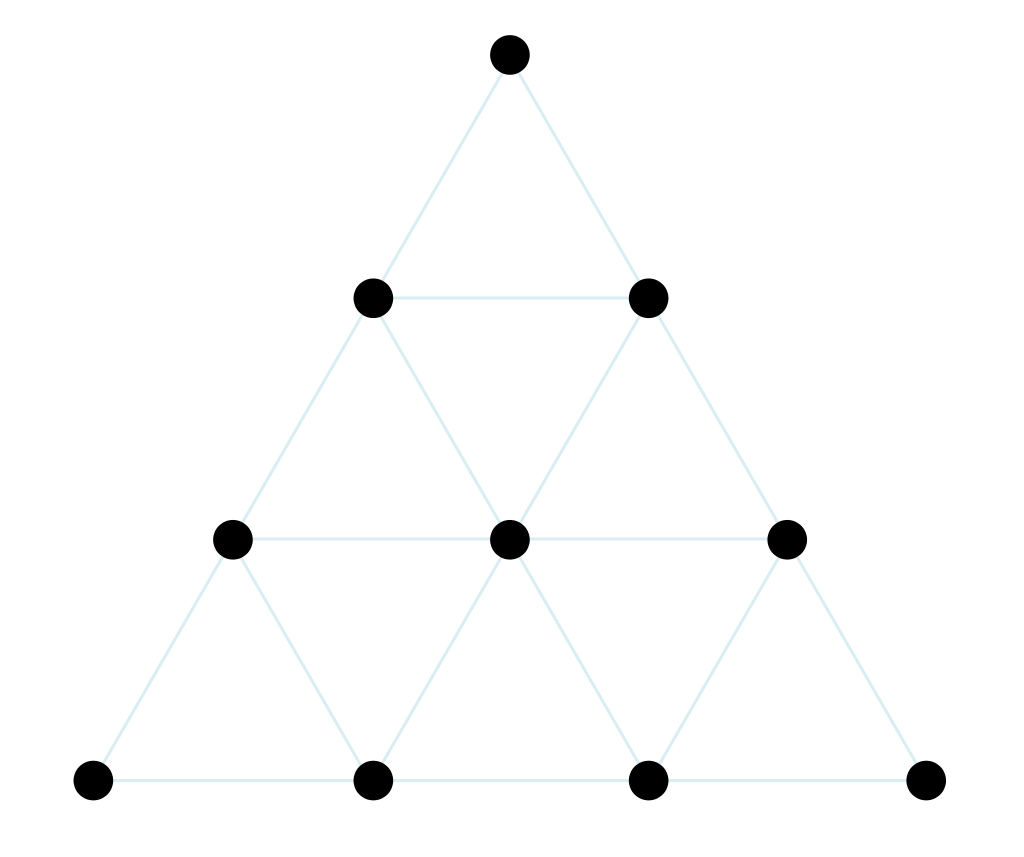
A depiction of the Tetraktys, a mystical number symbol of the Pythagoreans [100]
These perspectives also reflect a recurring theme in Western esotericism that we are, or need not be, passive subjects of creation; we can consciously participate in it and create too, on our own scale, by understanding and working with its principles.
According to this view, which Nicoll exposits, we can ultimately recreate ourselves, and go through an inner rebirth, which is the main object of esotericism.[101] This self-development is a return to a state of unity—and it’s the involvement of third force that enables this, Nicoll explains.[102] “Now if you reflect on this teaching,” he writes, “you will see that both on the psychological and the cosmological side, it is all about raising the level of Being to unity. All the cosmological diagrams lead to unity.”[103] And much as Fourth Way diagrams situate the unity of the Absolute atop the ray of creation, the Unity or Monad is depicted at the apex of the Pythagorean tetractys.
In a few places, Nicoll directly links and compares the Fourth Way teaching about the opposites to those of Pythagoras and other ancient sources—as in this example about the just or upright man, who “stands balanced between the opposites and is neither of them.”
The “just” or “righteous” man, both of the New Testament and of the Socratic teaching four centuries earlier, and of the teaching of Pythagoras as early as the 6th century B.C., is the “upright” man, the man who stands balanced between the opposites and is neither of them. This is a very difficult idea to understand. But the idea of the just man was directly derived from the ancient teaching about the opposites. A one-sided man could not be a just man. A fanatic, a bigoted … man, could not be just. Nor could a man who lived in some small part of himself be just. To be righteous, to be just, is to be balanced. Do not misuse this word balanced, imagining that perhaps because you do not feel things so strongly as others, you are more balanced. To be balanced is not to be stupid but to be alive to every side of existence.[104]
It is clear that this idea of a third reconciling force is an integral part not just of Fourth Way teachings, but of more ancient teachings too, as can be found in the Western esoteric tradition.
The popularity of non-Trinitarian teachings
While the general idea behind the law of three, taken in its broadest sense, may have a long heritage, in the Fourth Way it is given practical dimensions—actualised—via a form of a spiritual practice to be applied in the present moment for inner change. However, many popular spiritual sources today overlook or disregard this Trinitarian principle when it comes to addressing the duality of opposites within. There is often the idea of transcending our dualistic mind and emotions, and the prospect of coming to a state of inner unity, but not the notion of an integral third reconciling force that’s needed to harmonise and unite the opposites first of all, and from there allow an approach to unity (even if only momentarily to begin with).
“Many popular spiritual sources today overlook or disregard this Trinitarian principle when it comes to addressing the duality of opposites within.”
Much could be said about why certain philosophies and worldviews lack this idea of a trinity of three universal forces, and the importance of this “third thing between the opposites called variously Neutralizing Force, Connecting Force, Harmonizing Force, Relating Force, Reconciling Force, or simply Third Force.”[105] In my opinion, the popular modern spiritual teachings that lack a Trinitarian perspective tend to posit more naively optimistic approaches to spiritual practice, in which one perhaps seeks to “manifest” whatever one wants (without examining those desires, whether one should really follow them, or how opposition can actually teach us) or alternatively seeks inner peace by a withdrawal from all opposition and the struggle of opposites. I’ve noticed that “resistance” can be a dirty word in such teachings; there never seems to be a creative way to utilise this force—it is something to be avoided, not understood.
This is in contrast to the Trinitarian perspective espoused in esoteric sources like the Fourth Way, where one is directed to learn to intelligently use and harmonise all three forces—including the second force of resistance and opposition—either for inner transformation, for which “second force is necessary for the development of individuality,” or, in life, to intelligently use them to “co-operate and produce something”—as demonstrated in the mountain climbing example cited previously.[106]
Perhaps the challenges of a philosophy of life that recognises not only the inevitability, but ongoing necessity, of facing difficulties and pain in order to grow—sometimes referred to as “conscious/voluntary suffering”—tells us why this approach is not as popular as those which promise we have what we want with ease—perhaps even immediately.[107]
I’m now touching upon a deep philosophical matter beyond the scope of this article, but I raise it because I think it is very significant and must be broached in any serious consideration of the topic of opposites. I also do so because, having highlighted numerous similarities between Nicoll and Tolle on this subject, it would be remiss of me not to also point out their profound philosophical differences too.
Closing comments
Tolle corresponds a great deal with Nicoll in describing how the law of opposites operates in the outer world and, most importantly, within us psychologically.
As was shown in the first part of this article, both maintain that our psychological states swing or cycle between inseparable opposites which are two sides of the same coin. A resolution to this cycle of opposites can only be found in a higher state of consciousness, in which we connect with our real self, which is beyond any opposites. The superlative states we find here cannot turn into an opposite; genuine love cannot become hate.
“Where Nicoll and Tolle diverge most is on the importance of a third force, the reconciling aspect of the trinity.”
Essentially, Nicoll and Tolle agree that we must get beyond mental-emotional opposites entirely, and stop identifying with inner states on either pole, whether pleasant or painful. No solution can be found in either opposite as they simply reinforce each other. On this, they differ very much from the “positive thinking” approach, extolled in the Kybalion and many later sources, in which one is encouraged to polarise themselves on the positive pole of the emotional spectrum to avoid the negative.
Where Nicoll and Tolle diverge most is on the importance of a third force, the reconciling aspect of the trinity—described as “the law of three” in the Fourth Way. Nicoll links this mediating principle to an ancient stream of teaching visible in various forms of Western Esotericism, most obviously the Pythagoreans. It is worth noting, however, that this notion of the trinity can be found, albeit sometimes fragmentarily, in other sources, including older ones; Pythagoras is purported to have travelled widely and received much of his knowledge from civilisations older than the Greco-Roman world, notably Persia and Egypt.
“A key tenet of this teaching … is that the third reconciling force of the trinity brings harmony to the opposites, allowing for ordered manifestations in the world, and leading us toward unity within.”
A key tenet of this teaching espoused by Nicoll is that the third reconciling force of the trinity brings harmony to the opposites, allowing for ordered manifestations in the world, and leading us toward unity within. Yet this principle, with an ancient lineage, is not found in Tolle’s books. It is not that Tolle denies or refutes it—rather, it is simply absent. So, despite his claim that his work represents, “a restatement for our time of that one timeless spiritual teaching, the essence of all religions,”[108] this is clearly not the case here with the principle of trinity—of a tripartite nature to existence—which a number of sources, ancient and modern, deem fundamental.[109]
At the risk of perhaps oversimplifying, it seems we have two approaches here: the first, as exposited by Nicoll, is more about an inner transformation via the struggle of opposites, and learning to reconcile them, whereas the second—found, by no means exclusively, in Tolle’s work—is via a rejection of opposites as somehow unreal. In Nicoll’s work, the ancient esoteric principle of the reunification of opposites by the intervention of some third mediating factor, forming a trinity or triad, is posited as a necessary precursor to return to a state of unity—and this inner work, struggle and process creates the means for the transformation possible on this “return journey.” In other words, we can’t permanently come to inner unity as we are now: some process of inner work and development is needed at our level of creation. And that involves working with three forces, including resistance—hence the need to “struggle.” Whereas Tolle’s approach is more about transcending opposites entirely as you are now—reflecting a nondualistic, immediatist worldview positing an enlightenment you don’t have to work for.[110] This view is more consistent with teachings often categorised under the umbrella term “Neo Advaita.”
I think there are profound implications to this divergence, but, as already mentioned, it is far too much to get into that here. So, for now, I’ll just say that the spiritual implications of this divergence warrant greater reflection and attention. However, the key point I want to end on is that, whatever their differences, the similarities between Nicoll and Tolle on this theme—as with others I’ve discussed before—are significant. Given Eckhart Tolle’s fame and popularity, not to mention wealth, this is no small matter. The scope of Nicoll’s influence on contemporary spiritality via Tolle is a major story yet to be widely told and appreciated.
Notes and References
[1] Maurice Nicoll, Psychological Commentaries of the Teaching of Gurdjieff and Ouspensky, (London, Vincent Stuart Ltd. 1952), 319-22, 327, 732-33.
[2] Nicoll, Commentaries, 320.
[3] Eckhart Tolle, The Power of Now: A Guide to Spiritual Enlightenment, (Novato, New World Library, Kindle Edition, 1999-2004), 29
[4] Nicoll, Commentaries, 319, 321, 325, 731, 733, 1565, 1724.
[5] Tolle, Power of Now, 212, 183; A New Earth: Awakening to Your Life’s Purpose (Penguin Books Ltd. Kindle Edition, 2005-2016), 137; “A New Earth Online Class,” Chapter 1 Transcript PDF, (Oprah.com, 2008), p. 4, URL: https://images.oprah.com/images/obc_classic/book/2008/anewearth/ane_chapter1_transcript.pdf [Accessed March 2023]
[6] Nicoll, Commentaries, 320
[7] Tolle, Power of Now, 212
[8] See for example: Nicoll, Commentaries, 319, 731. This general definition and description of the law finds commonality with that found in The Kybalion. This will be discussed further on. It can also be compared to how the poet and philosopher Samuel Taylor Coleridge describes polarity in his theory of life. See: https://en.wikipedia.org/wiki/Coleridge%27s_theory_of_life#Life_as_polarity/function/motion See also: Gary Lachman, The Secret Teachers of the Western World, (New York, Jeremy P. Tarcher/Penguin, 2015), Kindle Edition, p. 23
[9] https://www.thoughtco.com/inventions-of-galileo-galilei-1991872
[10] Nicoll, Commentaries, 319, 731
[11] Ibid., 320-21
[12] Ibid., 327
[13] Tolle, Power of Now, 183, 212, 29; A New Earth, 282
[14] Tolle, New Earth, 279
[15] Note that both consider birth, not life, to be the opposite as death. Neither considers our real self to end after death–only our false self and transient personality (which, according to Nicoll, “gradually disintegrates”). See their views about this in my previous article, “Essence, Personality and the False Self: Comparing Maurice Nicoll and Eckhart Tolle on Three Aspects of Self-Identity.”
[16] Nicoll, Commentaries, 319, 326
[17] Tolle, Power of Now, 183
[18] It is possible Nicoll was drawing upon the ideas of German polymath Goethe here, as Nicoll likens these movements of contraction and expansion to the “systole” and “diastole” of the heart, something Goethe did. However, it’s perhaps more likely Nicoll was influenced more directly by Carl Jung, his former teacher and close friend, who referred to Goethe’s ideas, among others, when expositing his theory of psychological types, which proposes the existence of the two major personality attitudes: introversion and extroversion (a now widely-known concept). Nicoll does refer to Jung in his commentaries, including his theory of types, citing the four functions Jung identified as intuition, sensation, thinking, and feeling. It is clear, however, that Nicoll read very widely and was influenced by a number of sources on this theme—in addition to Gurdjieff and Ouspensky. As is typical of Nicoll, these influences enrich his exposition of Fourth Way ideas, rather than overshadowing it.
[19] Nicoll, Commentaries, 731-32
[20] Tolle, New Earth, 282; Power of Now, 183
[21] Nicoll, Commentaries, 319-22
[22] Tolle, Power of Now, 183
[23] Nicoll, Commentaries, 1561-62, 682, 320-21, 731, 1724
[24] Tolle, Power of Now, 29-32, 148; New Earth, 137
[25] Nicoll, Commentaries, 900-901, 1238, 915-16, 814,
[26] Tolle, New Earth, 137; Power of Now, 30, 148
[27] Tolle, New Earth, 137
[28] Nicoll, Commentaries, 916
[29] Nicoll, Commentaries, 814
[30] Tolle, New Earth, 137
[31] Nicoll, Commentaries, 1207
[32] Tolle, Power of Now, 30
[33] Nicoll, Commentaries, 328, 682, 1724-25,
[34] Tolle, Power of Now, 203-04, 29, 19
[35] Tolle, Power of Now, 29
[36] Nicoll, Commentaries, 1724-25,
[37] Nicoll, Commentaries, 814, 1207, 1538, 900
[38] Tolle, Power of Now, 156, 29-30
[39] Nicoll, Commentaries, 814, 1009, 1412, 1692
[40] Ibid., 1364, 651, 27,
[41] Ibid., 1008, 530, 651, 899, 718
[42] Ibid., 900-901, 1238-39, 473, 526, 814, 1207
[43] Ibid., 1238-39
[44] Tolle, A New Earth, 136-37; Power of Now, 29-30
[45] Nicoll, Commentaries, 814, 473
[46] Tolle, Power of Now, 161, 30
[47] Nicoll, Commentaries, 328, 733, 718-19, 330, 1247
[48] Tolle, New Earth, 137; Power of Now, 183, 29, 146
[49] Nicoll, Commentaries, 1593-94
[50] Tolle, Power of Now, 188, 29, 118
[51] The Kybalion has passed into the public domain, so there are many editions in circulation. There are variously priced eBook editions on Amazon. A free digital version is available at “The Kybalion Resource Page”: http://www.kybalion.org/ | An online scan of a print edition by the original publisher is available here: https://archive.org/details/kybalionstudyofh00thre/
[52] Mitch Horowitz argues that it does convey hermetic ideas but blends them with “New Thought” ideas: https://www.youtube.com/watch?v=aTcnzJk2_AM
[53] Richard Smoley provides a good overview of the book’s history and the case for William Walker Atkinson’s authorship of it in the introduction to its Centenary Edition. See: “The Three Initiates,” The Kybalion: Centenary Edition, (New York, TarcherPerigee/Penguin Publishing Group, Kindle Edition, 2018). Attkinson is also widely believed to have been the real author of book’s issued under the name of “Yogi Ramacharaka.” These were published by the “Yogi Publication Society”—the same publisher as for The Kybalion.
[54] The Kybalion: Centenary Edition, 14
[55] The Kybalion, 19
[56] Ibid., 22
[57] Ibid., 103
[58] Ibid., 22, 102, 97,
[59] Ibid., 103, 140
[60] Ibid., 22, 99, 104, 140
[61] Ibid., 104
[62] Ibid., 107
[63] Ibid., 139
[64] Ibid., 138-39
[65] Ibid., 26, 143
[66] Nicoll, Commentaries, 1724, 1561-63, 333
[67] Ibid., 1561-62
[68] Essence, Personality and the False Self: Comparing Maurice Nicoll and Eckhart Tolle on Three Aspects of Self-Identity
[69] The Kybalion, 140
[70] Ibid., 19
[71] Sophia Wellbeloved, Gurdjieff: The Key Concepts, (London and New York, Routledge, 2003), 122-23
[72] Nicoll, Commentaries, 333, 1111
[73] Wellbeloved, Key Concepts, 122-23
[74] For a summary of this idea refer to: Ibid., Harry Benjamin, Basic Self-Knowledge, (Boston, Weiser Books, 1971), Chapter XVII, 131-35; Gurdjieff’s introductory discourse, as recounted by Ouspensky: P.D. Ouspensky, In Search of the Miraculous: Fragments of an Unknown Teaching (New York, Harcourt, 1949), 77-79; and, Nicoll, Commentaries, 108-113.
[75] Nicoll, Commentaries, 108-113, 329,
[76] This is essentially an Emanationist view of creation—a pattern finding commonality with other cosmologies in Western Esotericism, although there are differences in the details. See: Lachman, Secret Teachers, 110
[77] Sophia Wellbeloved, Gurdjieff: The Key Concepts, (London and New York, Routledge, 2003), 116
[78] This is example is given by Harry Benjamin. Basic Self Knowledge, 132
[79] Nicoll, Commentaries, 329, 685-86, 875, 920, 970, 1626, 1659
[80] The way the formatory mind is said to work, with its binary thinking, is very much akin to how split brain theorist Dr Ian McGilchrist describes the left hemisphere of the brain functioning. Gary Lachman comments that those familiar with western esotericism may experience déjà vu when encountering McGilchrist’s views, and that is certainly the case here. Yet while it’s true, as Lachman writes, that “one of the central themes informing the western esoteric tradition, as well as that of the eastern, is the union of opposites,” this is often described, it must be said, at a more abstract or symbolic level. What makes this such a close and interesting parallel is that a specific part of the mind is very clearly pointed to as a primary culprit preventing our ability to unify opposites (although by no means the only one), much as McGilchrist singles out a specific hemisphere of the brain. Likewise, a higher aspect of the mind (Higher Intellectual Centre) is said to perceive beyond these limitations, much as the brain’s right hemisphere does, according to McGilchrist. For Lachman’s comments see: Gary Lachman, Secret Teachers of the Western World, (New York, Jeremy P. Tarcher/Penguin, 2015), Kindle Edition, 21
[81] Nicoll, The New Man, “Chapter One: The language of Parables,” (Utrecht, Eureka Editions, 1999, [First Published London, Vincent Stuart Ltd., 1950])
[82] Nicoll, Commentaries, 329
[83] Ibid., 685-6
[84] Ibid., 920
[85] Nicoll, Commentaries, 334
[86] Ibid., 332
[87] Ibid., 334
[88] Ibid., 329
[89] Ibid., 1111, 1017, 161, 1641, 1642
[90] Ibid., 330
[91] Ibid., 1656
[92] Ibid., 333
[93] Ibid., 1247
[94] Ibid., 1111-12
[95] Ibid., 785-86
[96] Ibid., 1457, 112, 1016
[97] Ibid., 112
[98] Ibid., 1016
[99] Gary Lachman, Secret Teachers of the Western World, (New York, Jeremy P. Tarcher/Penguin, 2015), Kindle Edition, 67
[100] https://en.wikipedia.org/wiki/Tetractys
[101] Nicoll, Commentaries, 348, 399, 1261
[102] Ibid., 1111
[103] Ibid., 168
[104] Ibid., 326
[105] Ibid., 356
[106] Ibid., 1017, 1111
[107] I have touched on this before with respect to contrasting the perspectives of Nicoll and Tolle, in a section about Immediatist Enlightenment in the article “The Creation of Now” and in a section on “The difficulty of dissolving the false self in Essence, Personality and the False Self.”
[108] Tolle, Power of Now, 10
[109] It is not the case either, in my view, that all ancient teachings are the same or variations of the same truth. However, I do believe there are certain universal principles which a number or traditions do share.
[110] For his views on what he calls “immediatism” and his placement of Tolle in this category, see: Arthur Versluis, American Gurus: From Transcendentalism to New Age Religion (New York, Oxford University Press, 2014) p. 1-2











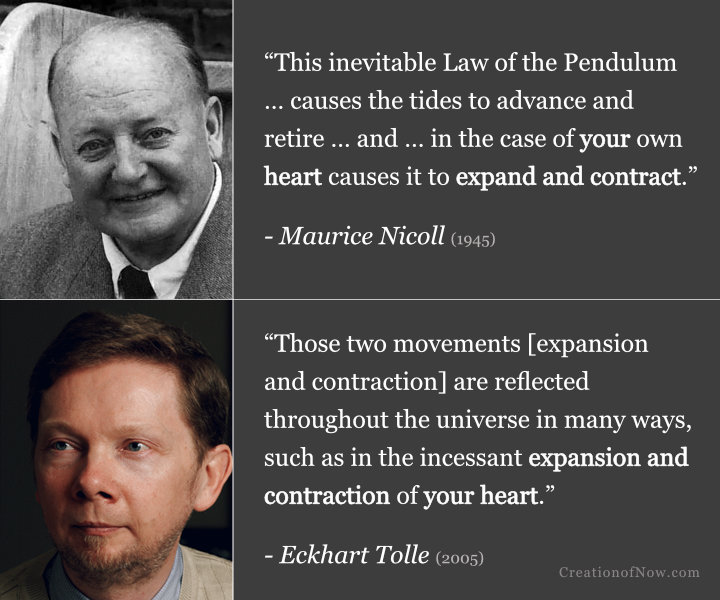


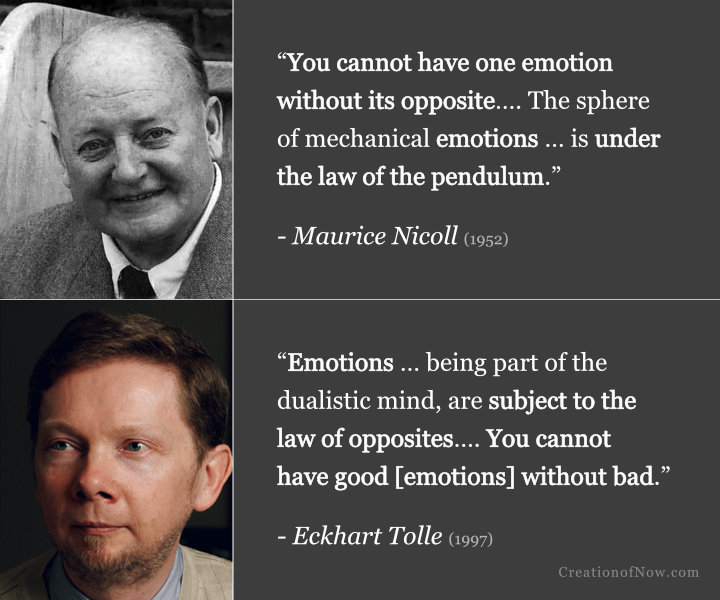

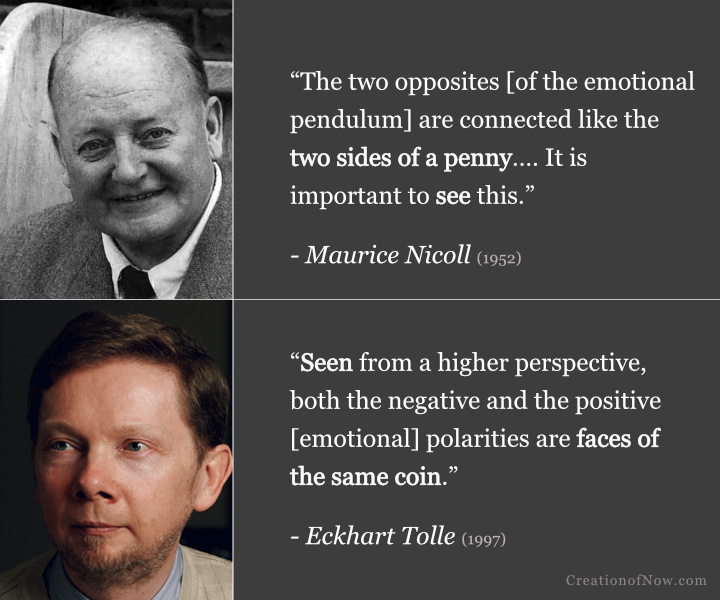


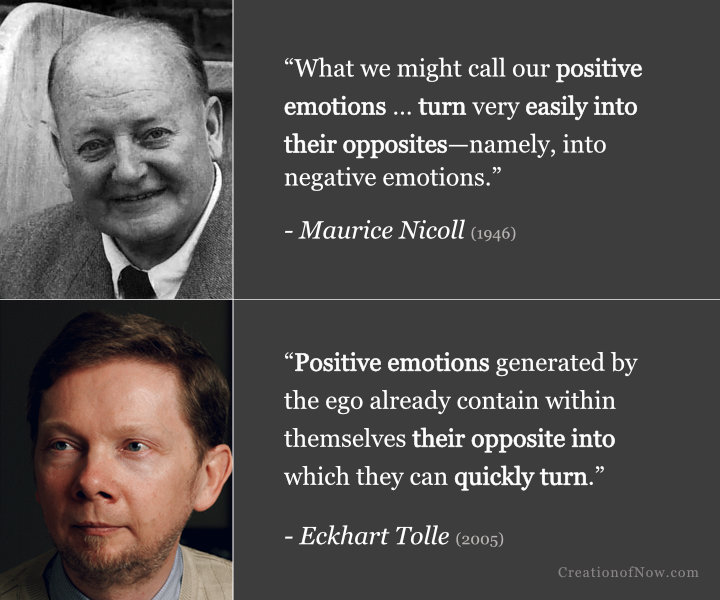
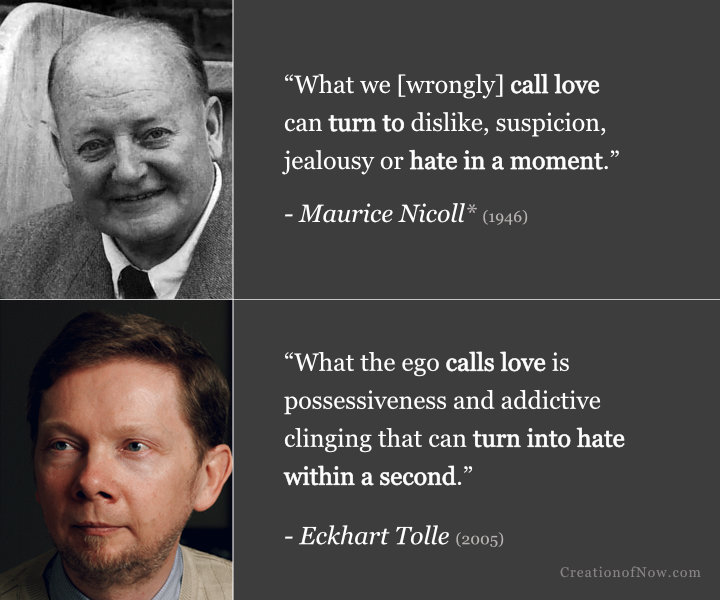
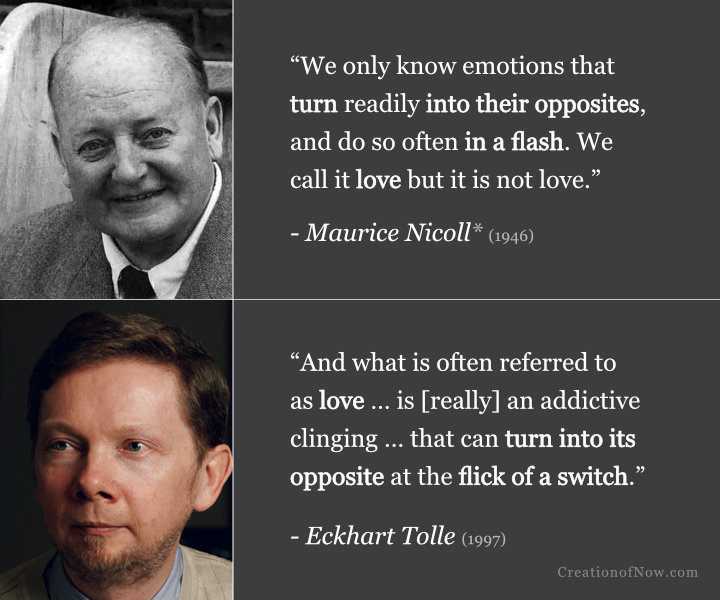
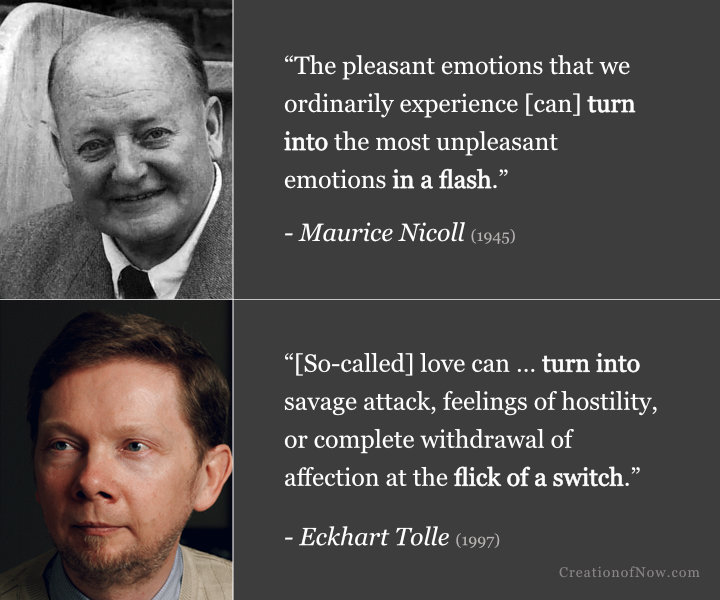







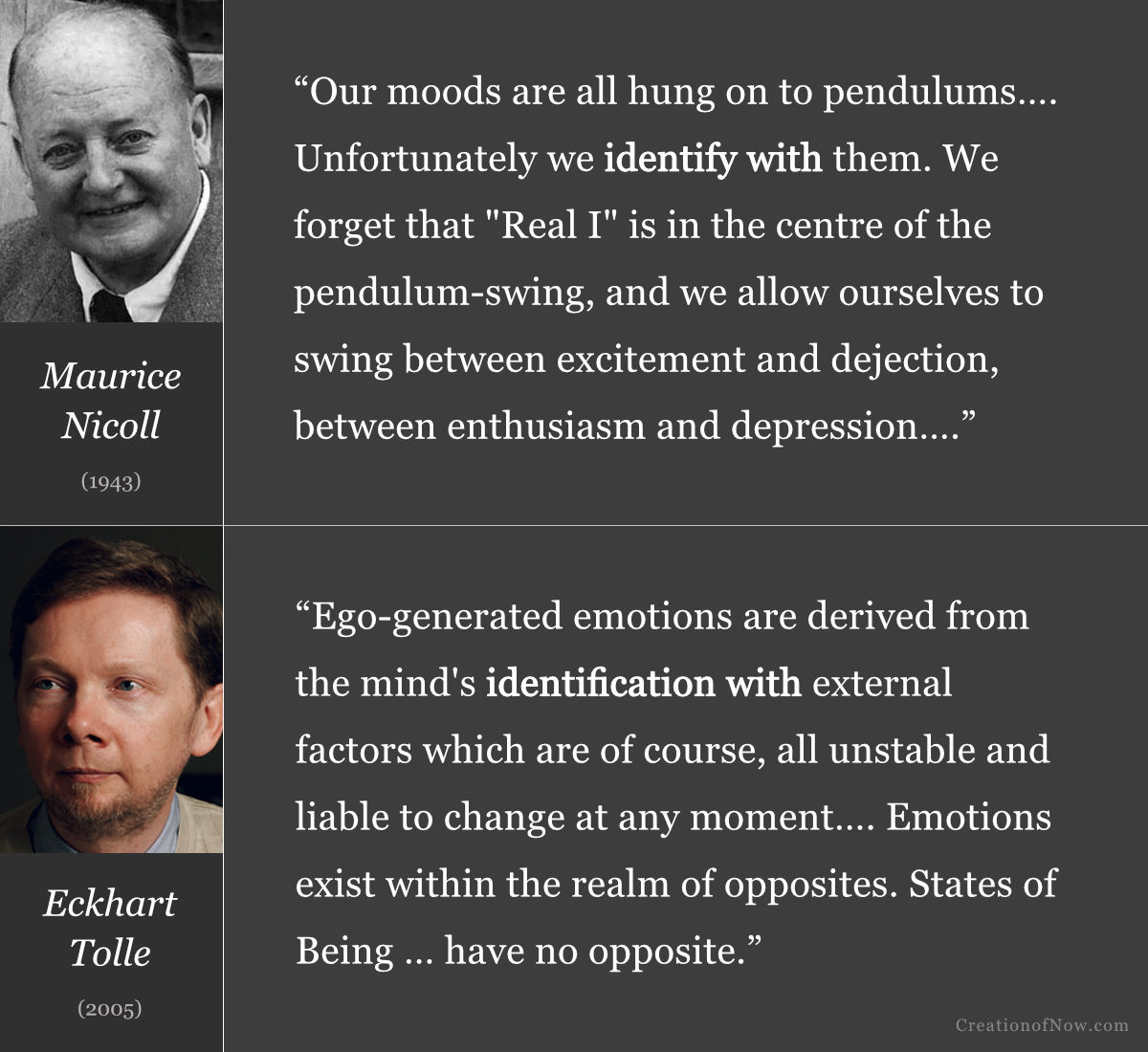
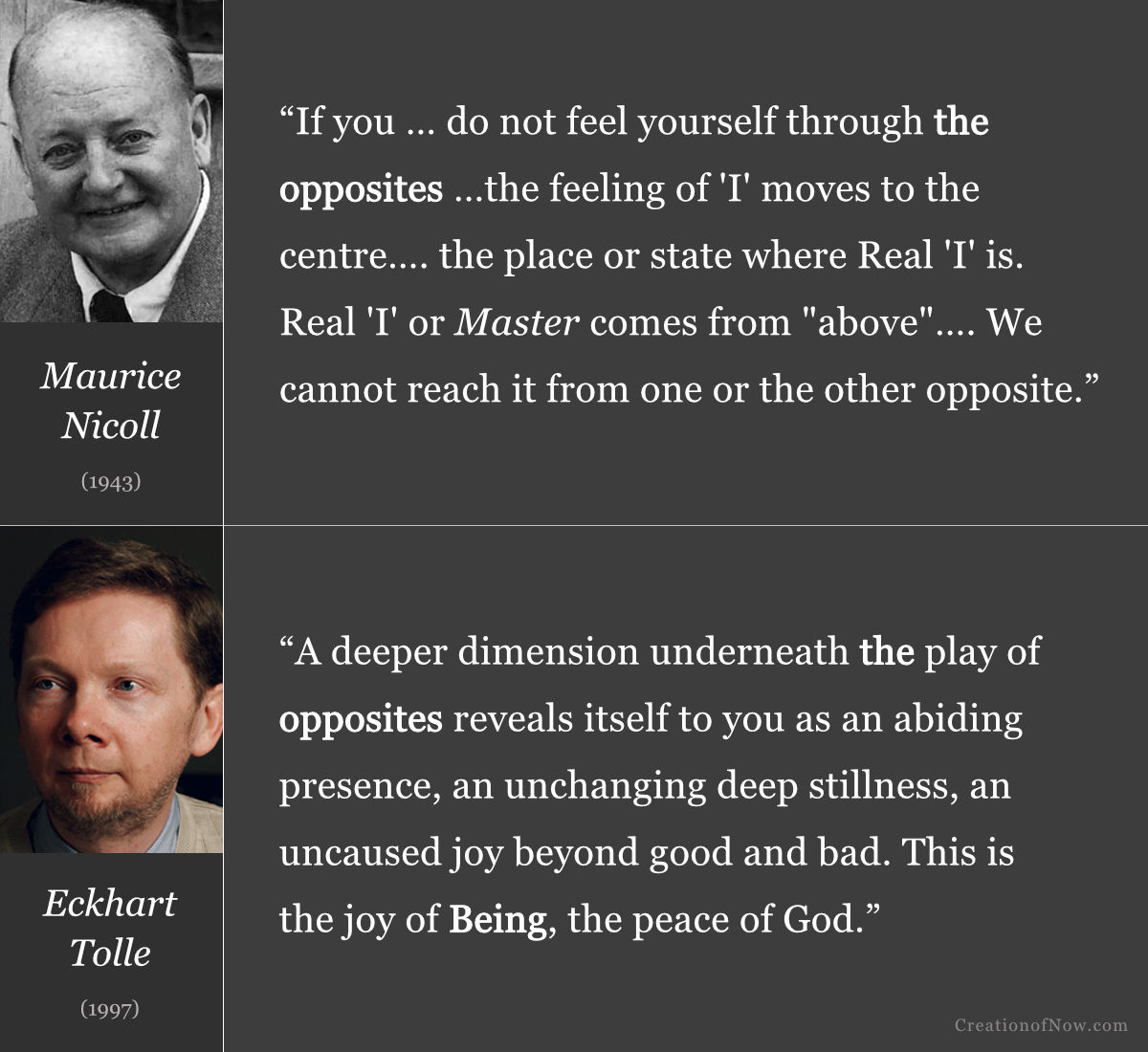
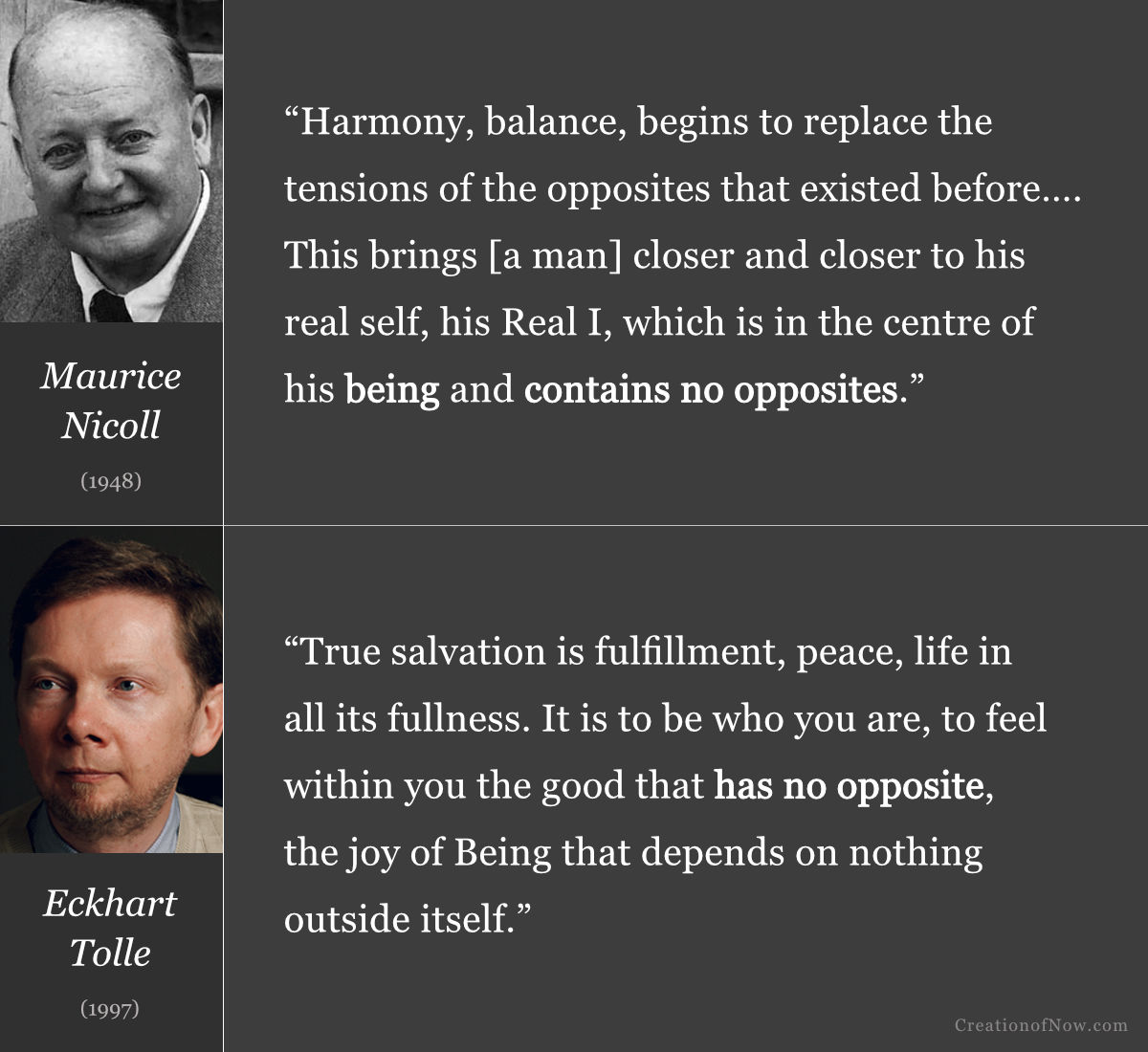


Leave a Reply